Impressionism in Music and Art
Impressionism in art and music mostly focuses on atmosphere and mood. Impressionism art can be recognized easily: the play of light, obscured edges, thin brush strokes. Impressionism in music, in its turn, is harder to describe. However, below you will learn the essentials about this style. Keep reading!

Introduction
Impressionist art is an artistic style that focuses on the viewer’s impression of the painting rather than the image itself. The impressionist movement planned by French painters in 1874 was meant to promote the freedom by artists to focus on other unique aspects of painting apart from realistic representation.
Invention of Impressionism
The pictures in impressionist art are painted with bright and bold colors to bring out an actual representation of the object in the picture (Herbert 14). The main aim of impressionism is to show the artist’s perception of the situation at hand. The pictures painted using the impressionist style do not have many details but the colors are expertly used to bring out the subject matter.
Modern impressionism entails the use of color physics in coming up with the exact impression the color and tone of the picture (Herbert 27). The effects of light and color are very important in the exact representation of an object. This paper will discuss the general characteristics of impressionism as applied in music and art.
Impressionism was invented with an objective of changing the traditional painting styles used to focus on the object and not the viewer. Impressionist art considers the kind of impression the painting leaves the viewer with.
Impressionist art is considered an emotional style because it emphasizes on the impression the image creates rather than focusing on producing a replica of the object being painted. Since impressionism does not pay attention to the intricate details of the picture, artists use bright colors that are painted with short strokes.
The Role of Light in Impressionism
Light is very important in impressionist art because it helps in capturing the viewer’s impression on the object. Light is used by impressionist artists to show the different impressions of the subject matter (Clancy 12).
Impressionist art entails the use of visible strokes to create different physical and visual texture using a variety of colors. The short and thick strokes are very important in showing the exact mood of the subject matter.
An impressionist painting always portrays different moods at different times of the day because of the changes in the lighting pattern (Clancy 12). A single object can appear as if it is a series of paintings.
A perfect example of pictures dedicated to lighting is the haystacks painting by Monet. The early afternoon light that is always bright makes painting look as it is has yellow and gold streaks and the same haystacks appear to have black and blue streaks in the evening light.
Impressionism advocates for blurry and subtle lines with breaks between shadows being optional. This gives the painting a foggy effect that is a true characteristic of impressionist art. Impressionist art also uses a combination of soft lines that are normally visible together with solid lines that are very striking.
These lines help the artist in manipulating shadows and lights to create different impressions on the viewer. Impressionist art is also characterized by foregrounds that are very sharp and bright with blurry backgrounds (Clancy 24). The colors in an impressionist painting are normally bright and vibrant a thing that makes impressionist painting to appear fanciful.
The colors are meant to represent different tones in the original image. It is very possible to break the colors in an impressionist painting into a variety of elements. Different paintings of the sun can be created by playing around with different colors to create different impressions.
Impressionism focuses on making the scenes look sensational. The set up of impressionist art is normally done outdoors away from the normal studio setting. This gives the artist the freedom to create a variety of impressions using light. Impressionist paintings are usually done in a weather that is quite unique with skies that are lovely and fascinating (Herbert 18).
The natural light appears in a variety of types which gives the impressionist artist much freedom to alter the details of the objects in the painting using the natural light in different types.
Impressionist artists observe the manner in which the natural light strikes the object in a careful manner. The fleeting effect is often preferred by many impressionists. Waves and moving objects clearly illustrate the behavior of light in different scenarios. Leaves are a perfect example of moving objects and are known to flicker in the presence of direct sunlight. Movements in impressionist art are very fundamental.
There are special effects in impressionism that are applied by artist to create the impression of movement. Impressionism tackles ordinary matters that affect our daily lives through paintings. Impressionist artists are always supposed to be natural and creative.
Most paintings in impressionist art are always unplanned but artists come up with new ideas in the process of painting. Impressionists like quick painting as opposed to the slow procedural studio painting (Herbert 42). Most impressionist paintings are often finished in one sitting.
The Effect of Impressionism on European Music
The impressionism movement also had a great effect on the classical European music apart from visual arts. Just like in arts, musical impressionism is completely different from the normal program music. The main focus in impressionist music is actually the atmosphere the music creates and the suggestion in it.
Normal program music focuses on the emotional part of music and the depiction of the musical story. Musical impressionist came into place as a reaction to the then excessively romanticized music (Clancy 17). Musical impressionism entails the use the whole tone scale and other scales that are very unfamiliar.
Impressionist musicians prefer to use dissonance instead of major and minor scales which are dramatically used in program music. Impressionist musicians’ compositions are normally the short form. Examples of these short form compositions include prelude, nocturne and arabesque (Clancy 17).
Similarities between Impressionist Music and Art
There are a lot of similarities between impressionist music and art. The shaping of new sound effects in impressionist music was greatly influenced by the color factor in impressionist art. Some of the unique effects in impressionist music include the accelerated piano dynamics and the long accords.
The combination of the two effects makes the music sound very interesting with an articulation that is very specific. The other common characteristic that has become very popular with impressionist music is the use of a glimmering sound (Herbert 34). The glimmering sound was created as a result of harmonic experiments by musical impressionists.
Impressionist musical harmonics are created by the use of a pentatonic scale and other modal scales. The texture of impressionist music is always clear as a result of utilizing unusual features of instruments that include the rarely used registers. The dynamics of impressionist music are achieved by the exposure of the dynamic effects that are very subtle (Clancy 23). The subtle dynamic effects play a big role in making the quality of the sound very sensational.
Impressionist music utilizes a variety of piano hues combined with written notes. The titles of impressionist music often refer to poetic pieces to demonstrate the variety of emotions associated with this kind of music.
Most of the subjects in impressionist music are mostly concerned with nature to bring out sensual effect. Impressionist music utilizes the bitonality technique which facilitates the use two harmonies at the same time. Bitonality lead to the creations of harmonies that are fuzzy contrary to the traditional clean and straightforward harmonies (Gunderson 29).
The Piano in Impressionist Music
A perfect example of impressionist music that is played using two different harmonies is the piano piece titled La Puerto Del Vina by one of the most popular impressionist musicians known as Debussy. Two hands are used to play different keys to create the bitonality effect.
The piano literature in impressionist music is very extensive and requires a skillful use of pedals in performances. Impressionist musicians use pitch, tone and volume variations to create visual images. Impressionist music greatly emphasizes on the tone and mood created by the music. Impressionist music pays less attention to the formal musical structures (Gunderson 30).
Melody, Rhytm, and Style
The melody of impressionist music varies according to the kind of mood the musician wants to create. The melody in impressionist music is always aimless with a few instances of long lines. The harmony of impressionist music focuses on a specific individual chord which gives the music some direction.
In impressionist music, rhythm is often replaced by orchestration, harmony and texture. Impressionist music employs a large orchestra to give the music a variety of sounds and not necessarily for volume and power (Gunderson 30). In comparison to impressionist art, the dissonances in impressionist music are not prepared in advance but are made in the event of playing the music. Impressionist music often uses chromatics and exotic rhythms which dissociate it from the traditional program music (Clancy 57).
The impressionist style values chord according to their specific sonorities and not on their relationship with other chords. Most of the concepts in impressionist music are influenced by impressionist art. Most impressionist musicians compose their music as a result of the revelations they get from the artistic paintings (H erbert 27). The general objective of impressionist music is to create descriptive impressions in the mind of listeners rather than form the actual pictures.
In conclusion, impressionism is an artistic movement that has brought about a change in the creation and perception of art and music. Impressionist art focuses on the use of light and color to create different visual impressions on their paintings.
Impressionist music is greatly influenced by impressionist paintings where the real picture of the subject matter is not given much emphasis. Impressionism gives artists the freedom to fully expose their creativity.
Works Cited
Clancy, John I. Impressionism: Historical Overview and Bibliography . New York: Nova Publishers, 2003. Print.
Gunderson, Jessica. Impressionism . New York: The Creative Company, 2008. Print.
Herbert, Robert L. Impressionism: Art, Leisure and Parisian Society . New York: Yale University Press, 1991. Print.
- Chicago (A-D)
- Chicago (N-B)
IvyPanda. (2023, October 28). Impressionism in Music and Art. https://ivypanda.com/essays/impressionist-music-and-art/
"Impressionism in Music and Art." IvyPanda , 28 Oct. 2023, ivypanda.com/essays/impressionist-music-and-art/.
IvyPanda . (2023) 'Impressionism in Music and Art'. 28 October.
IvyPanda . 2023. "Impressionism in Music and Art." October 28, 2023. https://ivypanda.com/essays/impressionist-music-and-art/.
1. IvyPanda . "Impressionism in Music and Art." October 28, 2023. https://ivypanda.com/essays/impressionist-music-and-art/.
Bibliography
IvyPanda . "Impressionism in Music and Art." October 28, 2023. https://ivypanda.com/essays/impressionist-music-and-art/.
- Impressionist, Post-Impressionist, and Expressionist
- Impressionist Art: History, Technique and Composition
- Impressionism History
- Impacts and Key Concepts of Impressionism
- The Difference Between Impressionism and Expressionism
- Is There Such a Thing as Impressionism in Music?
- Impressionist Paintings for Office Interior Design
- Impressionist Paintings Art Tour
- Impressionism and Post-Impressionism
- Claude Monet and Impressionism
- Islamic Art: Early Medieval Period
- Theory of Modern Art: Theory of Realism
- Positive Impact of Islamic Art on Society
- Theory of Modern Art: Rationalization
- Art During the Renaissance
Think you can get into a top-10 school? Take our chance-me calculator... if you dare. 🔥
Last updated March 22, 2024
Every piece we write is researched and vetted by a former admissions officer. Read about our mission to pull back the admissions curtain.
Blog > Essay Advice , Personal Statement > How to Write a Great College Essay About Music (with examples)
How to Write a Great College Essay About Music (with examples)
Admissions officer reviewed by Ben Bousquet, M.Ed Former Vanderbilt University
Written by Alex McNeil, MA Admissions Consultant
Key Takeaway
Ask any admissions officer if they’ve read a college essay about music, and they’ll definitely say yes. Between music extracurriculars and academic interests in music, it’s is one of the most common college essay topics.
So does that mean that you shouldn’t write your college essay about music?
Not necessarily. But as with any common college essay topic, some approaches are better than others.
Let’s get into it.
Why you should (and shouldn’t) write your Common App essay about music
As we explained in our Stanford Items exercise , writing your college essay on a common topic isn’t off-limits. In fact, most college essays share common topics and themes. Trying to find a completely unique, never-been-done-before topic is almost impossible. And writing about a quirky topic in hopes of coming across as unique usually backfires.
In other words, it’s likely that you’ll write about the same topic as someone else.
The problem arises, however, when you write about a common topic in a cliche way . Cliches are always a danger in college essays, but in especially college essay topics that tend to surface again and again.
To avoid cliches, your college essay about music needs to be deeply personal, specific, and meaningful. You’ll want to let go of any over-generalizations or truisms and focus on the details of your own story.
Because you’ll need to write meaningfully and vulnerably, you should only write your college essay about music if you have something genuine and significant to say.
The Best Ways to Approach Your College Essay about Music
College essays about music aren’t off the table, but you should be thoughtful in how you write about them. The following two approaches will help you avoid cliches and find an authentic, meaningful story that fulfills all the requirements of a personal statement .
Writing about music as an academic interest
If you’re interested in studying music in college, then you can consider writing your college essay about music as an academic interest. A college essay about your academic interest in music can show fantastic intellectual fit with a school.
Let’s say you want to study music theory or composition. You might write about a topic you find compelling, a problem you’ve solved, or even a recounting of your journey becoming interested in the subject.
Or maybe you’re an aspiring performer planning on studying music performance. As an admissions officer, I read outstanding essays about students performing their favorite pieces, creating emotional music projects, and teaching lessons to young children.
No matter your topic, your goal with this approach is to show an intellectual spark, a curiosity and passion that will demonstrate to your admissions officers that you’ll be a great addition to the music community on their campuses.
Writing poignantly about a deeply meaningful extracurricular
The previous approach is great if you want to study music, but what if music is just an extracurricular passion of yours? Don’t worry—you can still write about it.
In that case, the best way is to focus on meaning. Remember: personal statements should be deeply-meaningful reflections on your personal strengths.
To start, reflect on your music extracurricular. Is it playing guitar in a band? Playing trombone in your school’s symphony? Learning piano from your grandma? How your love of poetry turned into a love of songwriting?
Next, think about what strengths you have to showcase. If you play guitar in a band, maybe you want to highlight your collaborative spirit. If you love poetry and songwriting, perhaps you focus on your creativity.
Writing about your love of music in a way that draws upon your strengths will make sure that your Common App essay avoids the following two approaches and gives admissions officers a reason to admit you.
Approaches to Avoid
While the following two approaches aren’t necessarily bad, they are the most cliche ways of approaching a college essay about music. You might want to consider avoiding them.
An inauthentic tale of triumph
Let me tell you a cliche story.
When I was in fourth grade, I decided to join the school orchestra. I found it exceedingly difficult at first. No matter how hard I tried, I never could seem to place my fingers correctly on the fingerboard. Every sound I made mimicked a screeching cat. But I decided not to give up. I practiced every day after school and on the weekends. By the time I was in ninth grade, I had made it into my high school’s top orchestra.
Is that a lovely story? Yes, absolutely. Is it hearty enough for a college essay? No. While it tells a good narrative of growth and progress, it remains on the surface of the writer’s life. It comes across as a convenient way to brag about your strengths instead of exploring them in a genuine way. In this example, the story also focuses on events that happened way too far in the past.
A song that changed your life
This approach is by far the most common cliche in college essays about music. We’ve all been there: a favorite song that transports you to a moment in your life whenever you hear it. It makes sense that you’d want to write about yours.
But there’s a problem with this approach. Too often, it reads as trite or unoriginal, and the end result usually doesn’t say much about the writer. And when it does, the message an admissions officer gets doesn’t typically give them any more reason to admit you. Since you want your college essay to be meaningful, even vulnerable, and strengths-based, you’re better off choosing another topic that better speaks to who you are.
Key Takeaways + Examples
College essays about music aren’t for everyone. But when you get it right, you can strike the perfect chord with admissions officers (you’re welcome for the pun).
As you go, dig deep, find something genuinely personal, and try to avoid the most common and cliche ways of approaching the topic.
Want to see some examples of college essays about music before you get started? Check out our examples, The Time Machine and The Band .
Liked that? Try this next.

The Incredible Power of a Cohesive College Application

How to Write a College Essay (Exercises + Examples)
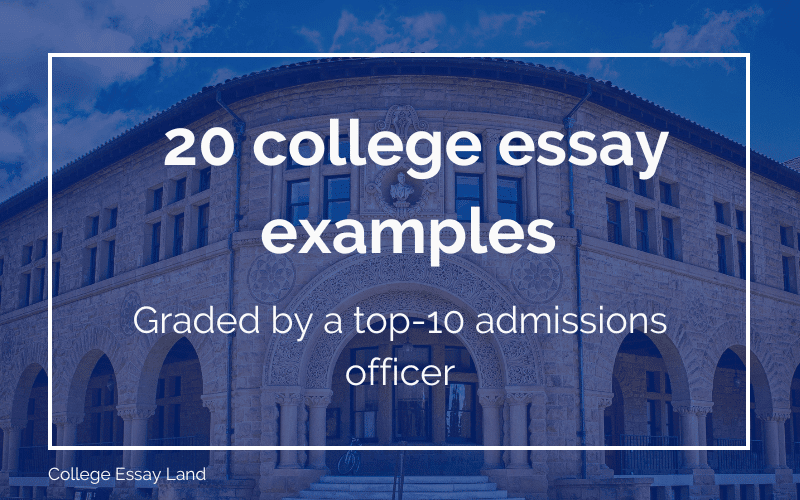
20 College Essay Examples (Graded by Former Admissions Officers)

How A Selective Admissions Office Reads 50k Applications In A Season
"the only actually useful chance calculator i’ve seen—plus a crash course on the application review process.".
Irena Smith, Former Stanford Admissions Officer
We built the best admissions chancer in the world . How is it the best? It draws from our experience in top-10 admissions offices to show you how selective admissions actually works.
Guide on How to Write a Music Essay: Topics and Examples

Let's Understand What is Music Essay
You know how some school assignments are fun to write by default, right? When students see them on the course syllabus, they feel less like a burden and more like a guaranteed pleasure. They are about our interests and hobbies and therefore feel innate and intuitive to write. They are easy to navigate, and interesting topic ideas just pop into your head without much trouble.

Music essays belong to the category of fun essay writing. What is music essay? Anything from in-depth analysis to personal thoughts put into words and then to paper can fall into a music essay category. An essay about music can cover a wide range of topics, including music history, theory, social impact, significance, and musical review. It can be an analytical essay about any music genre, musical instruments, or today's music industry.
Don't get us wrong, you will still need to do extensive research to connect your opinions to a broader context, and you can't step out of academic writing standards, but the essay writing process will be fun.
In this article, our custom essay writing service is going to guide you through every step of writing an excellent music essay. You can draw inspiration from the list of music essay topics that our team prepared, and later on, you will learn what an outstanding essay on music is by an example of a music review essay.
What are Some Music Topics to Write About
There are so many exciting music topics to write about. We would have trouble choosing one. You can write about various music genres, be it country music or classical music; you can research music therapy or how music production happens.
Okay, forgive us for getting carried away; music makes us enthusiastic. Below you will find a list of various music essay topics prepared from our thesis writing service . Choose one and write a memorable essay about everyone's favorite art form.
Music Argumentative Essay Topics
Music essays can be written about an infinite number of themes. You can even write about performance or media comparison.
Here is a list of music argumentative essay topics. These edge-cutting topics will challenge your readers and get you an easy A+.
- Exploring the evolution of modern music styles of the 21st century
- Is it ethical to own and play rare musical instruments?
- Is music therapy an effective mental health treatment?
- Exploring the Intersection of Technology and Creativity in electronic music
- The Relevance of traditional music theory in modern music production
- The Role of musical pieces in the Transmission of cultural identity
- The value of historical analysis in understanding the significance of music in society
- How does exposing listeners to different genres of music break down barriers
- Exploring the cognitive effects of music on human brain development
- The therapeutic potential of music in treating mental disorders
Why is Music Important Essay Topics
Do you know which essay thrills our team the most? The importance of music in life essay. We put our minds together and came up with a list of topics about why music is so central to human life. Start writing why is music important essay, and we guarantee you that you will be surprised by how much fun you had crafting it.
- Popular Music and its Role in shaping cultural trends
- Music as a metaphorical language for expressing emotions and thoughts
- How music changes and influences social and political movements
- How the music of different countries translates their history to outsiders
- The innate connection between music and human beings
- How music helps us understand feelings we have never experienced
- Does music affect our everyday life and the way we think?
- Examining the cross-cultural significance of music in society
- How rock music influenced 70's political ideologies
- How rap music closes gaps between different racial groups in the US
Consider delegating your ' write my essay ' request to our expert writers for crafting a perfect paper on any music topic!
Why I Love Music Essay Topics
We want to know what is music to you, and the best way to tell us is to write a why I love music essay. Below you will find a list of music essay topics that will help you express your love for music.
- I love how certain songs and artists evoke Memories and Emotions
- I love the diversity of music genres and how different styles enrich my love for music
- I love how music connects me with people of different backgrounds
- How the music of Linkin Park helped me through life's toughest challenges
- What does my love for popular music say about me?
- How the unique sounds of string instruments fuel my love for music
- How music provides a temporary Release from the stresses of daily life
- How music motivates me to chase my dreams
- How the raw energy of rock music gets me through my daily life
- Why my favorite song is more than just music to me
Need a Music Essay ASAP?
Our expert team is quick to get you an A+ on all your assignments!
Music Therapy Essay Topics
One of the most interesting topics about music for an essay is music therapy. We are sure you have heard all the stories of how music cures not only mental but also physical pains. Below you can find a list of topics that will help you craft a compelling music therapy essay. And don't forget that you can always rely on our assistance for fulfilling your ' write my paper ' requests!
- The effectiveness of music therapy in reducing stress and pain for cancer patients
- Does pop music have the same effects on music therapy as classical music?
- Exploring the benefits of music therapy with other genres beyond classical music
- The potential of music therapy in aiding substance abuse treatment and recovery
- The Role of music therapy in Addressing PTSD and Trauma in military veterans
- The impact of music therapy on enhancing social interaction and emotional expression in individuals with developmental disabilities
- The use of music therapy in managing chronic pain
- Does musical therapy help depression?
- Does music reduce anxiety levels?
- Is music therapy better than traditional medicine?
History of Music Essay Topics
If you love analytical essays and prefer to see the bigger picture, you can always write a music description essay. Below you can find some of the most interesting topics for the history of music essay.
- The Significance of natural instruments in music production and performance
- Tracing the historical development of Western music theory
- How electronic music traces its roots back to classical music
- How the music industry evolved from sheet music to streaming services
- How modern producers relate to classical composers
- The Origins and Influence of Jazz Music
- How folk music saved the Stories of unnamed heroes
- Do we know what the music of ancient civilizations sounded like?
- Where does your favorite bandstand in the line of music evolve?
- The Influence of African American Music on modern pop culture
Benefits of Music Essay Topics
If you are someone who wonders what are some of the values that music brings to our daily life, you should write the benefits of music essay. The music essay titles below can inspire you to write a captivating essay:
- How music can be used to promote cultural awareness and understanding
- The benefits of music education in promoting creativity and innovation
- The social benefits of participating in music groups
- The Impact of Music on Memory and Learning
- The cognitive benefits of music education in early childhood development
- The effects of music on mood and behavior
- How learning to play an instrument improves cognitive functions.
- How music connects people distanced by thousands of miles
- The benefits of listening to music while exercising
- How music can express the feelings words fail to do so
Music Analysis Essay Example
Reading other people's papers is a great way to scale yours. There are many music essay examples, but the one crafted by our expert writers stands out in every possible way. You can learn what a great thesis statement looks like, how to write an engaging introduction, and what comprehensive body paragraphs should look like.
Click on the sample below to see the music analysis essay example.
How to Write a Music Essay with Steps
Writing music essays is definitely not rocket science, so don't be afraid. It's just like writing any other paper, and a music essay outline looks like any other essay structure.

- Start by choosing a music essay topic. You can use our list above to get inspired. Choose a topic about music that feels more relevant and less researched so you can add brand-new insights. As we discussed, your music essay can be just about anything; it can be a concert report or an analytical paper about the evolution of music.
- Continue by researching the topic. Gather all the relevant materials and information for your essay on music and start taking notes. You can use these notes as building blocks for the paper. Be prepared; even for short essays, you may need to read books and long articles.
- Once you have all the necessary information, the ideas in your head will start to take shape. The next step is to develop a thesis statement out of all the ideas you have in your head. A thesis statement is a must as it informs readers what the entire music essay is about. Don't be afraid to be bold in your statement; new outlooks are always appreciated.
- Next, you'll need a music essay introduction. Here you introduce the readers to the context and background information about the research topic. It should be clear, brief, and engaging. You should set the tone of your essay from the very beginning. Don't forget the introduction is where the thesis statement goes.
- One of the most important parts of essay writing is crafting a central body paragraph about music. This is where you elaborate on your thesis, make main points, and support them with the evidence you gathered beforehand. Remember, your music essay should be well structured and depict a clear picture of your ideas.
- Next, you will need to come up with an ideal closing paragraph. Here you will need to once again revisit the main points in your music essay, restate them in a logical manner and give the readers your final thoughts.
- Don't forget to proofread your college essay. Whether you write a long or short essay on music, there will be grammatical and factual errors. Revise and look through your writing with a critical mind. You may find that some parts need rewriting.
Key Takeaways
Music essays are a pleasure to write and read. There are so many topics and themes to choose from, and if you follow our How to Write a Music Essay guide, you are guaranteed to craft a top-notch essay every time.
Be bold when selecting a subject even when unsure what is research essay topic on music, take the writing process easy, follow the academic standards, and you are good to go. Use our music essay sample to challenge yourself and write a professional paper.
If you feel stuck and have no time our team of expert writers is always ready to give you help from all subject ( medical school personal statement school help ). Visit our website, submit your ' write my research paper ' request and a guaranteed A+ essay will be on your way in just one click.
Need Help in Writing an Impressive Paper?
Our expert writers are here to write a quality paper that will make you the star of your class!
FAQs on Writing a Music Essay
Though music essay writing is not the hardest job on the planet, there are still some questions that often pop up. Now that you have a writing guide and a list of essay topics about music, it's time to address the remaining inquiries. Keep reading to find the answers to the frequently asked questions.
Should Artists' Music be Used in Advertising?
What type of music is best for writing an essay, why do people love music, related articles.
.webp)
Heilbrunn Timeline of Art History Essays
Music and art of china.
Seated Musician
Upright bell (nao)
Bell (Yongzhong)
Dancer and Musicians
Section of a Clapper (Paiban)
Seated Female Musicians
Lady Su Hui and Her Verse Puzzle
In the style of Qiu Ying
Guqin (古琴 )
Chime (Qing) for Linzhong (8th note in the 12-note scale)
Musical Stone with Theme of the "Hundred Antiques"
Set of decorative belt plaques
Sheng ( 笙 )
Yunluo (雲鑼 )"Cloud Gong"
Suona (嗩吶 )
J. Kenneth Moore Department of Musical Instruments, The Metropolitan Museum of Art
September 2009
China provides some of the earliest traces of music making. These are mainly in the form of well-preserved musical instruments, the tangible evidence of music. Over several millennia, musical instruments from regional indigenous traditions as well as from India and Central and West Asia were assimilated into the mainstream of Chinese music. Some of the most ancient instruments have been retained, transformed, or revived throughout the ages, and many are in common use even today, testifying to a living legacy of a durable art. This legacy is frequently celebrated in the visual arts of China, documenting rituals and celebrations, or as status symbols of those whose lives were enhanced by the resonate sounds of instruments made from hide, clay, metal, stone, gourd, wood, silk, and bamboo.
Archaeological Evidence of Musical Instruments Eight thousand years ago, people in central China delighted to the airy timber of tonally precise flutes. Made from the wing bones of red-crowned cranes, these remarkable Neolithic end-blown flutes, the world’s oldest playable instruments, are witnesses to a dynamic musical tradition that was astonishingly sophisticated both acoustically and musically. Unearthed in Jiahu , Henan Province, in 1986 and preserved in the Henan Provincial Museum, Zhengzhou, the flutes, known as gudi , possess five to eight perfectly spaced and fastidiously drilled finger holes. These rare instruments clearly document the maker’s hand in applying acoustic accuracy in the service of music. It is believed that the flutes played a role in ritual as music was often connected to cosmology and the stability of the state.
In the period between 3,500 and 2,000 years ago, Chinese rulers constructed elaborate tombs containing weapons, vessels, and remains of servants and, in some cases, full ensembles of musical instruments such as stone chimes (known today as qing ), ovoid clay ocarinas ( xun , 2005.14 ), and drums. In addition to these instruments, Shang-dynasty finds (ca. 1600–1046 B.C. ) include beautifully decorated dual-toned bronze bells with and without clappers ( ling and nao , 49.136.10 ), barrel-shaped drums ( gu ), and bronze drums. Hints as to the use of these instruments were inscribed on small pieces of bone (oracle bones) dating from the fourteenth to the twelfth century B.C. These pictographs make reference to ritual dance and music, and those depicting instruments are easily equated with modern Chinese characters.
Zhou-dynasty (1046–256 B.C.) musical ensembles contained highly complex and varied instruments. Orchestras consisting of exceptionally decorated instruments, notably one discovered in 1978 in the tomb of the Marquis Yi of the former Zeng state (Hubei Province, 5th century B.C. ), reveal an astonishing understanding of the interplay between physics, acoustics, metallurgy, and design. Some 125 instruments, including sets of tuned bells and stone slabs suspended from ornate tiered stands, transverse flutes ( chi , 2006.156 ), bamboo panpipes, mouth organs producing several pitches at once ( sheng ), zithers ( qin and se , 1994.605.85a–c ), and drums comprise an ensemble that was the most sophisticated and complex of its time.
Classification and Context of Musical Instruments Zhou scholars provided the first classification system for musical instruments. The bayin (eight-tone) system presented in the Zhouli (Rites of Zhou, ca. third century B.C. ) organized musical instruments into eight resonating materials–hide, clay, metal, stone, gourd, wood, silk, and bamboo. This breakdown complemented cosmological assumptions and concepts such as the eight compass points and the eight trigrams ( bagua ). In later periods, as wind (bamboo) and string (silk) instruments became dominant, the term sizhou (“silk-bamboo”) became a synonym for music itself.
During the Han dynasty (206 B.C.–220 A.D.), in the first century B.C. , the Yuefu (imperial music bureau) was established. Its purpose was to collect regional popular music and poetry, oversee ceremonies at court, hire musicians, and standardize pitch. (A version of this office continued to operate until 1911.) Many ancient traditions lost during the Qin dynasty (221–206 B.C. ), the dynasty preceding the Han, were recovered, and a Confucian musical ideology was disseminated.
Migration and Cultural Exchange In addition to the royal and ritual instruments found in tombs, many types of instruments serving popular and folk traditions existed, and of these, only vague written references or visual iconography survives. Significantly, instruments such as the harps, lutes , and drums depicted in the caves at Dunhuang and other oasis towns in Central Asia were making their way into China from the south and west as trade began along the routes that would become the Silk Road .
Beginning in the Han dynasty, musical instruments were among the items introduced and exchanged along the Silk Road. Among those brought from the west were lutes similar to today’s Middle Eastern ‘ud , oboe-type instruments, and metal trumpets; among those brought from India were long-necked lutes and drums. In China, the ‘ud -like instrument, with its round back, was transformed into the flat-backed pipa . The same Middle Eastern instrument later migrated west and became the European lute, used from the Middle Ages through the Baroque period. Indeed, “lute” is a corruption of the Arabic al-‘ud —an etymological clue to the instrument’s origin.
Music in Tang-dynasty China (618–907) underwent a radical change in the sixth and seventh centuries as a result of the mass migration of peoples from Central Asia, many of whom came to the interior of China as musicians and dancers at the imperial court or in popular venues. Patronage of music at court peaked during the reign of Emperor Xuanzong (r. 712–56), when thousands studied at the Imperial Music Academy and hundreds of the best musicians resided at the palace.
Bells From the earliest historical periods, particularly in ritual music from the Bronze Age onward, bells have been an essential component of instrumental ensembles in China. The earliest known bronze bells, from the Shang dynasty , are the type called nao ( 49.136.10 ), in which the mouth of the bell faces up, and seem to have been played singly or in sets of three or five. After the tenth century, during the Zhou dynasty, sets of bells of the zhong ( 13.220.86 ) type, suspended from a wood frame, were used.
Both the zhong and the nao are struck externally and, thanks to their unique construction, are capable of producing two accurately tuned tones of intervals sounding a major or minor third. Both types are expertly cast, with sides that flare from the crown to the mouth, which is elliptical in cross section and concave in profile. Such a shape, used for small animal bells since 1500 B.C. , provides one tone when struck in the center and another when struck on the side. The earliest evidence of a chromatic scale is a set of ten nao from the tenth or eleventh century B.C. , unearthed in 1993 in Ningxiang, Hunan Province. The handlelike stem projecting from the crown helps to secure the bell to a frame. Tuned bells ranged greatly in size; some were only about nine inches tall, while the largest found to date is about 40 inches tall and weighs 488 pounds.
Bells and stone chimes were the chief instruments in Chinese ritual music from the Bronze Age until 1911. There is now a revival of their use at the Confucius Temple in Qufu, Shandong Province. The Museum houses a bell and a jade chime made within a year of each other for ceremonial and ritual use at the court of the Qing-dynasty Kangxi emperor (r. 1662–1722). Each is a single piece from a large set of instruments made at the imperial workshops, which were operating at the highest standard of craftsmanship during the early decades of the eighteenth century.
Moore, J. Kenneth. “Music and Art of China.” In Heilbrunn Timeline of Art History . New York: The Metropolitan Museum of Art, 2000–. http://www.metmuseum.org/toah/hd/much/hd_much.htm (September 2009)
Further Reading
So, Jenny F., ed. Music in the Age of Confucius . Washington, D.C.: Freer Gallery of Art and Arthur M. Sackler Gallery, 2000.
Thrasher, Alan R. Chinese Musical Instruments . New York: Oxford University Press, 2000.
Additional Essays by J. Kenneth Moore
- Moore, J. Kenneth. “ The Pipa .” (October 2003)
- Moore, J. Kenneth. “ The Qin .” (October 2003)
- Moore, J. Kenneth. “ The Rag-dung .” (October 2003)
Related Essays
- Internationalism in the Tang Dynasty (618–907)
- Musical Instruments of the Indian Subcontinent
- The Vibrant Role of Mingqi in Early Chinese Burials
- The Rag-dung
- Buddhism and Buddhist Art
- Chinese Buddhist Sculpture
- Chinese Calligraphy
- Chinese Cloisonné
- Chinese Gardens and Collectors’ Rocks
- Chinese Handscrolls
- Chinese Painting
- Han Dynasty (206 B.C.–220 A.D.)
- Jiahu (ca. 7000–5700 B.C.)
- Longevity in Chinese Art
- Music in the Ancient Andes
- Nature in Chinese Culture
- Neolithic Period in China
- Qin Dynasty (221–206 B.C.)
- The Qing Dynasty (1644–1911): Painting
- Shang and Zhou Dynasties: The Bronze Age of China
- Tang Dynasty (618–907)
List of Rulers
- List of Rulers of China
- China, 1000 B.C.–1 A.D.
- China, 1000–1400 A.D.
- China, 1400–1600 A.D.
- China, 1–500 A.D.
- China, 1600–1800 A.D.
- China, 2000–1000 B.C.
- China, 500–1000 A.D.
- Archaeology
- Calligraphy
- Eastern Zhou Dynasty
- Funerary Art
- Han Dynasty
- Musical Instrument
- Qing Dynasty
- Sculpture in the Round
- Shang Dynasty
- Southeast Asia
- Tang Dynasty
- Western Zhou Dynasty
Artist or Maker

- Superstar Branding Package
- Independent Consultation Package
- Custom Promotion Packages
- Case Studies
- Featured Artists
- Radio Promotion
- Media Relations
- Online Music Promotion
- Independent Distribution
- Independent Services
- Best Rappers Alive
- Hip Hop Facts
How to Write a Music Essay

Are you passionate about music and eager to express your insights and thoughts on your favourite tunes and compositions? Well, your’re in the right place. Writing a music essay allows you to delve into the melodies, rhythms, and stories behind the music you adore. It’s a journey that combines your love for music with the art of essay writing. So, whether you’re a budding music critic, a student, or simply someone who wants to share their musical experiences, this article is here to guide you through the creative process.
Write my essay online might be your initial thought when faced with the prospect of composing a music essay, but fear not! In this article, we’ll explore the steps to craft a compelling and engaging music essay that resonates with your readers. We’ll uncover the secrets of choosing the right topic, structuring your essay effectively, and refining your writing skills. So, grab your headphones and your favourite instrument, and let’s embark on this harmonious journey into the world of music essay writing.
Choosing the Right Music Topic
When it comes to writing a captivating music essay, one of the crucial first steps is selecting the right topic. Your topic serves as the foundation upon which your essay will be built, so it’s essential to choose one that resonates with your interests and passions. Consider exploring a genre, artist, or musical era that genuinely moves you. Are you drawn to the rhythms of jazz or the storytelling of folk music? Do you find inspiration in the works of a particular composer or the evolution of hip-hop? Selecting a topic that personally engages you will not only make the writing process more enjoyable but also allow you to convey your enthusiasm to your readers. As you contemplate potential subjects, take some time to research and gather information to ensure you have enough material to craft a well-rounded and informative essay.
For those seeking guidance and assistance, best essay writing services can be a valuable resource. These services can offer expert advice on refining your topic and provide access to academic sources and research materials. Remember that your music topic should not only align with your passions but also offer a unique perspective or angle that can pique the interest of your audience. Whether you’re exploring the influence of music on culture, the evolution of a particular instrument, or the impact of a renowned composer, the key is to choose a topic that allows you to delve deep into the melodies and stories that inspire you.
Structuring Your Music Essay
A well-structured music essay is like a finely composed symphony, with each section harmonizing seamlessly to convey your message effectively. To begin, your essay should follow a typical structure consisting of an introduction, body paragraphs, and a conclusion. The introduction serves as the overture, setting the stage by introducing your topic and providing an engaging hook to capture your readers attention. It’s here that you should also present a clear and concise thesis statement that outlines the main argument or theme of your essay. Consider the thesis statement as the melody that your essay will revolve around, guiding your readers through the composition.
In the body paragraphs, you’ll develop and elaborate on the themes and arguments presented in your thesis statement. Each paragraph can be thought of as a distinct movement in your musical journey, with a clear beginning, middle, and end. Start by introducing the main point of the paragraph, provide supporting evidence, and then engage in thoughtful analysis. This structure not only ensures clarity and coherence but also showcases your ability to articulate ideas effectively. Remember that when discussing musical pieces or artists, it’s crucial to include specific examples, such as lyrics, melodies, or performances, to illustrate your points. Much like a composer weaving intricate harmonies, your analysis should delve deep into the nuances of the music, showcasing your understanding of the subject matter. Finally, the conclusion acts as the crescendo, bringing your essay to a satisfying close. Here, you should summarize your key points, restate your thesis, and leave your readers with a thought-provoking final note.
Writing and Polishing Your Music Essay
Now that you’vee chosen the perfect music topic and structured your essay, it’s time to dive into the heart of your composition: the actual writing. When writing a music essay, its essential to employ effective writing techniques that engage your readers and paint a vivid picture. Consider using descriptive language that appeals to the senses, making the music come alive on the page.
Describe the melodies, harmonies, and rhythms with colourful adjectives and metaphors, allowing your readers to feel the emotions conveyed by the music. Additionally, providing historical or cultural context is often crucial, as it helps your audience understand the significance of the music you’re discussing. Just as a composer combines various elements to create a masterpiece, your writing should blend these elements seamlessly to craft an engaging and informative essay.
Research plays a vital role in enhancing the depth and credibility of your music essay. Ensure that you thoroughly research the music, artist, or topic you’re covering, using reputable sources. It’s imperative to provide proper citations and references to acknowledge the works and ideas of others and to avoid plagiarism. Much like the importance of harmonizing melodies in music, harmonizing your research and writing ensures that your essay flows smoothly and convincingly. Finally, the finishing touches are equally significant. Revise and edit your essay meticulously to eliminate grammatical errors and awkward sentences. This process helps enhance clarity, coherence, and overall quality, ensuring that your music essay resonates with readers as beautifully as the music you’re describing. By applying these techniques, your music essay can become a well-composed masterpiece that engages, informs, and leaves a lasting impression.
In the world of music, where every note carries a story and every melody has its own unique magic, writing about it can be an enchanting journey. As we wrap up our exploration of how to write a music essay, lets recap the essential points we’ve covered. Choosing the right topic, one that resonates with your passion and interests, is the first step towards crafting a remarkable music essay. Structure matters; organize your thoughts coherently, create a compelling thesis, and support it with evidence and analysis. Finally, the art of writing is a powerful tool. Use descriptive language, conduct thorough research, cite your sources properly, and don’t forget to polish your essay until it gleams with clarity and precision.
Now, it’s your turn to take these guidelines and let your love for music shine through your writing. Whether you’re dissecting a symphony, exploring the history of jazz, or analyzing the lyrics of your favourite song, these tips will help you create essays that resonate with readers, just as the music itself does. So, go ahead, embark on your musical odyssey with a pen in hand and a melody in your heart. With these insights and your passion as your guide, you’re bound to craft essays that celebrate the magic of music and inspire others to listen, learn, and appreciate the art form in all its glory.
Related Posts
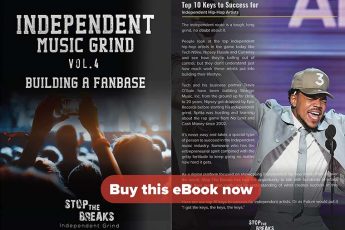
eBook: Independent Music Grind Vol. 4 - Building a Fanbase
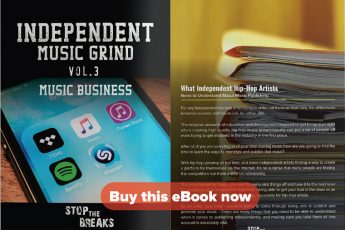
eBook: Independent Music Grind Vol. 3 - Music Business
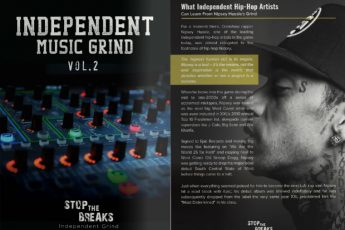
eBook: Independent Music Grind Vol. 2
- Best Rapper Alive: The Top 10 Best Rappers Of 2013
- The Top 5 Best Rappers Alive, Every Year Since 1987
- Top 25 Best President Davo Songs from All Releases Ranked
- Best Rapper Alive: The Top 10 Best Rappers Of 2017
- Poisonous Paragraphs: The Top 10 Inspectah Deck Guest Verses
- The 10 Biggest Hip-Hop First Week Album Sales Of 2020 (So Far)
- The 10 Biggest Hip-Hop First Week Album Sales of 2016
- Ranking Future’s First Week Sales Numbers
- Best Rapper Alive: The Top 10 Best Rappers Of 2015
- The 10 Biggest Hip-Hop First Week Album Sales Of 2015
- The Top 10 Best Hip-Hop Podcasts Right Now
- The Biggest First Week Hip-Hop Album Sales Of The Last 20 Years
- Dreams Money Can Buy: Ranking Drake First Week Album Sales
- Best Rapper Alive: The Top 10 Best Rappers Of 2014
- Best Rapper Alive: The Top 10 Best Rappers Of 2012
- Best Rapper Alive: The Top 10 Best Rappers Of 2011
- Best Rapper Alive: The Top 10 Best Rappers Of 2010
- Best Rapper Alive: The Top 10 Best Rappers Of 2009
- Best Rapper Alive: The Top 10 Best Rappers Of 2008
- Best Rapper Alive: The Top 10 Best Rappers Of 2007
- [Infographic] 5 Biggest First Week Album Sales in Hip-Hop History
- In My Lifetime: The Top 15 Hip-Hop Facts About Jay-Z
- It Was Written: The Top 15 Hip-Hop Facts About Nas
- The 10 Biggest Hip-Hop First Week Album Sales In 2004
- The 10 Biggest Hip-Hop First Week Album Sales In 2005
- Search Menu
- Browse content in Arts and Humanities
- Browse content in Archaeology
- Anglo-Saxon and Medieval Archaeology
- Archaeological Methodology and Techniques
- Archaeology by Region
- Archaeology of Religion
- Archaeology of Trade and Exchange
- Biblical Archaeology
- Contemporary and Public Archaeology
- Environmental Archaeology
- Historical Archaeology
- History and Theory of Archaeology
- Industrial Archaeology
- Landscape Archaeology
- Mortuary Archaeology
- Prehistoric Archaeology
- Underwater Archaeology
- Urban Archaeology
- Zooarchaeology
- Browse content in Architecture
- Architectural Structure and Design
- History of Architecture
- Residential and Domestic Buildings
- Theory of Architecture
- Browse content in Art
- Art Subjects and Themes
- History of Art
- Industrial and Commercial Art
- Theory of Art
- Biographical Studies
- Byzantine Studies
- Browse content in Classical Studies
- Classical Literature
- Classical Reception
- Classical History
- Classical Philosophy
- Classical Mythology
- Classical Art and Architecture
- Classical Oratory and Rhetoric
- Greek and Roman Archaeology
- Greek and Roman Epigraphy
- Greek and Roman Law
- Greek and Roman Papyrology
- Late Antiquity
- Religion in the Ancient World
- Digital Humanities
- Browse content in History
- Colonialism and Imperialism
- Diplomatic History
- Environmental History
- Genealogy, Heraldry, Names, and Honours
- Genocide and Ethnic Cleansing
- Historical Geography
- History by Period
- History of Agriculture
- History of Education
- History of Emotions
- History of Gender and Sexuality
- Industrial History
- Intellectual History
- International History
- Labour History
- Legal and Constitutional History
- Local and Family History
- Maritime History
- Military History
- National Liberation and Post-Colonialism
- Oral History
- Political History
- Public History
- Regional and National History
- Revolutions and Rebellions
- Slavery and Abolition of Slavery
- Social and Cultural History
- Theory, Methods, and Historiography
- Urban History
- World History
- Browse content in Language Teaching and Learning
- Language Learning (Specific Skills)
- Language Teaching Theory and Methods
- Browse content in Linguistics
- Applied Linguistics
- Cognitive Linguistics
- Computational Linguistics
- Forensic Linguistics
- Grammar, Syntax and Morphology
- Historical and Diachronic Linguistics
- History of English
- Language Variation
- Language Families
- Language Acquisition
- Language Evolution
- Language Reference
- Lexicography
- Linguistic Theories
- Linguistic Typology
- Linguistic Anthropology
- Phonetics and Phonology
- Psycholinguistics
- Sociolinguistics
- Translation and Interpretation
- Writing Systems
- Browse content in Literature
- Bibliography
- Children's Literature Studies
- Literary Studies (Modernism)
- Literary Studies (Asian)
- Literary Studies (European)
- Literary Studies (Eco-criticism)
- Literary Studies (Romanticism)
- Literary Studies (American)
- Literary Studies - World
- Literary Studies (1500 to 1800)
- Literary Studies (19th Century)
- Literary Studies (20th Century onwards)
- Literary Studies (African American Literature)
- Literary Studies (British and Irish)
- Literary Studies (Early and Medieval)
- Literary Studies (Fiction, Novelists, and Prose Writers)
- Literary Studies (Gender Studies)
- Literary Studies (Graphic Novels)
- Literary Studies (History of the Book)
- Literary Studies (Plays and Playwrights)
- Literary Studies (Poetry and Poets)
- Literary Studies (Postcolonial Literature)
- Literary Studies (Queer Studies)
- Literary Studies (Science Fiction)
- Literary Studies (Travel Literature)
- Literary Studies (War Literature)
- Literary Studies (Women's Writing)
- Literary Theory and Cultural Studies
- Mythology and Folklore
- Shakespeare Studies and Criticism
- Browse content in Media Studies
- Browse content in Music
- Applied Music
- Dance and Music
- Ethics in Music
- Ethnomusicology
- Gender and Sexuality in Music
- Medicine and Music
- Music Cultures
- Music and Culture
- Music and Religion
- Music and Media
- Music Education and Pedagogy
- Music Theory and Analysis
- Musical Scores, Lyrics, and Libretti
- Musical Structures, Styles, and Techniques
- Musicology and Music History
- Performance Practice and Studies
- Race and Ethnicity in Music
- Sound Studies
- Browse content in Performing Arts
- Browse content in Philosophy
- Aesthetics and Philosophy of Art
- Epistemology
- Feminist Philosophy
- History of Western Philosophy
- Metaphysics
- Moral Philosophy
- Non-Western Philosophy
- Philosophy of Action
- Philosophy of Law
- Philosophy of Religion
- Philosophy of Science
- Philosophy of Language
- Philosophy of Mind
- Philosophy of Perception
- Philosophy of Mathematics and Logic
- Practical Ethics
- Social and Political Philosophy
- Browse content in Religion
- Biblical Studies
- Christianity
- East Asian Religions
- History of Religion
- Judaism and Jewish Studies
- Qumran Studies
- Religion and Education
- Religion and Health
- Religion and Politics
- Religion and Science
- Religion and Law
- Religion and Art, Literature, and Music
- Religious Studies
- Browse content in Society and Culture
- Cookery, Food, and Drink
- Cultural Studies
- Customs and Traditions
- Ethical Issues and Debates
- Hobbies, Games, Arts and Crafts
- Lifestyle, Home, and Garden
- Natural world, Country Life, and Pets
- Popular Beliefs and Controversial Knowledge
- Sports and Outdoor Recreation
- Technology and Society
- Travel and Holiday
- Visual Culture
- Browse content in Law
- Arbitration
- Browse content in Company and Commercial Law
- Commercial Law
- Company Law
- Browse content in Comparative Law
- Systems of Law
- Competition Law
- Browse content in Constitutional and Administrative Law
- Government Powers
- Judicial Review
- Local Government Law
- Military and Defence Law
- Parliamentary and Legislative Practice
- Construction Law
- Contract Law
- Browse content in Criminal Law
- Criminal Procedure
- Criminal Evidence Law
- Sentencing and Punishment
- Employment and Labour Law
- Environment and Energy Law
- Browse content in Financial Law
- Banking Law
- Insolvency Law
- History of Law
- Human Rights and Immigration
- Intellectual Property Law
- Browse content in International Law
- Private International Law and Conflict of Laws
- Public International Law
- IT and Communications Law
- Jurisprudence and Philosophy of Law
- Law and Society
- Law and Politics
- Browse content in Legal System and Practice
- Courts and Procedure
- Legal Skills and Practice
- Primary Sources of Law
- Regulation of Legal Profession
- Medical and Healthcare Law
- Browse content in Policing
- Criminal Investigation and Detection
- Police and Security Services
- Police Procedure and Law
- Police Regional Planning
- Browse content in Property Law
- Personal Property Law
- Study and Revision
- Terrorism and National Security Law
- Browse content in Trusts Law
- Wills and Probate or Succession
- Browse content in Medicine and Health
- Browse content in Allied Health Professions
- Arts Therapies
- Clinical Science
- Dietetics and Nutrition
- Occupational Therapy
- Operating Department Practice
- Physiotherapy
- Radiography
- Speech and Language Therapy
- Browse content in Anaesthetics
- General Anaesthesia
- Neuroanaesthesia
- Browse content in Clinical Medicine
- Acute Medicine
- Cardiovascular Medicine
- Clinical Genetics
- Clinical Pharmacology and Therapeutics
- Dermatology
- Endocrinology and Diabetes
- Gastroenterology
- Genito-urinary Medicine
- Geriatric Medicine
- Infectious Diseases
- Medical Oncology
- Medical Toxicology
- Pain Medicine
- Palliative Medicine
- Rehabilitation Medicine
- Respiratory Medicine and Pulmonology
- Rheumatology
- Sleep Medicine
- Sports and Exercise Medicine
- Clinical Neuroscience
- Community Medical Services
- Critical Care
- Emergency Medicine
- Forensic Medicine
- Haematology
- History of Medicine
- Medical Ethics
- Browse content in Medical Dentistry
- Oral and Maxillofacial Surgery
- Paediatric Dentistry
- Restorative Dentistry and Orthodontics
- Surgical Dentistry
- Browse content in Medical Skills
- Clinical Skills
- Communication Skills
- Nursing Skills
- Surgical Skills
- Medical Statistics and Methodology
- Browse content in Neurology
- Clinical Neurophysiology
- Neuropathology
- Nursing Studies
- Browse content in Obstetrics and Gynaecology
- Gynaecology
- Occupational Medicine
- Ophthalmology
- Otolaryngology (ENT)
- Browse content in Paediatrics
- Neonatology
- Browse content in Pathology
- Chemical Pathology
- Clinical Cytogenetics and Molecular Genetics
- Histopathology
- Medical Microbiology and Virology
- Patient Education and Information
- Browse content in Pharmacology
- Psychopharmacology
- Browse content in Popular Health
- Caring for Others
- Complementary and Alternative Medicine
- Self-help and Personal Development
- Browse content in Preclinical Medicine
- Cell Biology
- Molecular Biology and Genetics
- Reproduction, Growth and Development
- Primary Care
- Professional Development in Medicine
- Browse content in Psychiatry
- Addiction Medicine
- Child and Adolescent Psychiatry
- Forensic Psychiatry
- Learning Disabilities
- Old Age Psychiatry
- Psychotherapy
- Browse content in Public Health and Epidemiology
- Epidemiology
- Public Health
- Browse content in Radiology
- Clinical Radiology
- Interventional Radiology
- Nuclear Medicine
- Radiation Oncology
- Reproductive Medicine
- Browse content in Surgery
- Cardiothoracic Surgery
- Gastro-intestinal and Colorectal Surgery
- General Surgery
- Neurosurgery
- Paediatric Surgery
- Peri-operative Care
- Plastic and Reconstructive Surgery
- Surgical Oncology
- Transplant Surgery
- Trauma and Orthopaedic Surgery
- Vascular Surgery
- Browse content in Science and Mathematics
- Browse content in Biological Sciences
- Aquatic Biology
- Biochemistry
- Bioinformatics and Computational Biology
- Developmental Biology
- Ecology and Conservation
- Evolutionary Biology
- Genetics and Genomics
- Microbiology
- Molecular and Cell Biology
- Natural History
- Plant Sciences and Forestry
- Research Methods in Life Sciences
- Structural Biology
- Systems Biology
- Zoology and Animal Sciences
- Browse content in Chemistry
- Analytical Chemistry
- Computational Chemistry
- Crystallography
- Environmental Chemistry
- Industrial Chemistry
- Inorganic Chemistry
- Materials Chemistry
- Medicinal Chemistry
- Mineralogy and Gems
- Organic Chemistry
- Physical Chemistry
- Polymer Chemistry
- Study and Communication Skills in Chemistry
- Theoretical Chemistry
- Browse content in Computer Science
- Artificial Intelligence
- Computer Architecture and Logic Design
- Game Studies
- Human-Computer Interaction
- Mathematical Theory of Computation
- Programming Languages
- Software Engineering
- Systems Analysis and Design
- Virtual Reality
- Browse content in Computing
- Business Applications
- Computer Games
- Computer Security
- Computer Networking and Communications
- Digital Lifestyle
- Graphical and Digital Media Applications
- Operating Systems
- Browse content in Earth Sciences and Geography
- Atmospheric Sciences
- Environmental Geography
- Geology and the Lithosphere
- Maps and Map-making
- Meteorology and Climatology
- Oceanography and Hydrology
- Palaeontology
- Physical Geography and Topography
- Regional Geography
- Soil Science
- Urban Geography
- Browse content in Engineering and Technology
- Agriculture and Farming
- Biological Engineering
- Civil Engineering, Surveying, and Building
- Electronics and Communications Engineering
- Energy Technology
- Engineering (General)
- Environmental Science, Engineering, and Technology
- History of Engineering and Technology
- Mechanical Engineering and Materials
- Technology of Industrial Chemistry
- Transport Technology and Trades
- Browse content in Environmental Science
- Applied Ecology (Environmental Science)
- Conservation of the Environment (Environmental Science)
- Environmental Sustainability
- Environmentalist Thought and Ideology (Environmental Science)
- Management of Land and Natural Resources (Environmental Science)
- Natural Disasters (Environmental Science)
- Nuclear Issues (Environmental Science)
- Pollution and Threats to the Environment (Environmental Science)
- Social Impact of Environmental Issues (Environmental Science)
- History of Science and Technology
- Browse content in Materials Science
- Ceramics and Glasses
- Composite Materials
- Metals, Alloying, and Corrosion
- Nanotechnology
- Browse content in Mathematics
- Applied Mathematics
- Biomathematics and Statistics
- History of Mathematics
- Mathematical Education
- Mathematical Finance
- Mathematical Analysis
- Numerical and Computational Mathematics
- Probability and Statistics
- Pure Mathematics
- Browse content in Neuroscience
- Cognition and Behavioural Neuroscience
- Development of the Nervous System
- Disorders of the Nervous System
- History of Neuroscience
- Invertebrate Neurobiology
- Molecular and Cellular Systems
- Neuroendocrinology and Autonomic Nervous System
- Neuroscientific Techniques
- Sensory and Motor Systems
- Browse content in Physics
- Astronomy and Astrophysics
- Atomic, Molecular, and Optical Physics
- Biological and Medical Physics
- Classical Mechanics
- Computational Physics
- Condensed Matter Physics
- Electromagnetism, Optics, and Acoustics
- History of Physics
- Mathematical and Statistical Physics
- Measurement Science
- Nuclear Physics
- Particles and Fields
- Plasma Physics
- Quantum Physics
- Relativity and Gravitation
- Semiconductor and Mesoscopic Physics
- Browse content in Psychology
- Affective Sciences
- Clinical Psychology
- Cognitive Neuroscience
- Cognitive Psychology
- Criminal and Forensic Psychology
- Developmental Psychology
- Educational Psychology
- Evolutionary Psychology
- Health Psychology
- History and Systems in Psychology
- Music Psychology
- Neuropsychology
- Organizational Psychology
- Psychological Assessment and Testing
- Psychology of Human-Technology Interaction
- Psychology Professional Development and Training
- Research Methods in Psychology
- Social Psychology
- Browse content in Social Sciences
- Browse content in Anthropology
- Anthropology of Religion
- Human Evolution
- Medical Anthropology
- Physical Anthropology
- Regional Anthropology
- Social and Cultural Anthropology
- Theory and Practice of Anthropology
- Browse content in Business and Management
- Business History
- Business Strategy
- Business Ethics
- Business and Government
- Business and Technology
- Business and the Environment
- Comparative Management
- Corporate Governance
- Corporate Social Responsibility
- Entrepreneurship
- Health Management
- Human Resource Management
- Industrial and Employment Relations
- Industry Studies
- Information and Communication Technologies
- International Business
- Knowledge Management
- Management and Management Techniques
- Operations Management
- Organizational Theory and Behaviour
- Pensions and Pension Management
- Public and Nonprofit Management
- Strategic Management
- Supply Chain Management
- Browse content in Criminology and Criminal Justice
- Criminal Justice
- Criminology
- Forms of Crime
- International and Comparative Criminology
- Youth Violence and Juvenile Justice
- Development Studies
- Browse content in Economics
- Agricultural, Environmental, and Natural Resource Economics
- Asian Economics
- Behavioural Finance
- Behavioural Economics and Neuroeconomics
- Econometrics and Mathematical Economics
- Economic Methodology
- Economic Systems
- Economic History
- Economic Development and Growth
- Financial Markets
- Financial Institutions and Services
- General Economics and Teaching
- Health, Education, and Welfare
- History of Economic Thought
- International Economics
- Labour and Demographic Economics
- Law and Economics
- Macroeconomics and Monetary Economics
- Microeconomics
- Public Economics
- Urban, Rural, and Regional Economics
- Welfare Economics
- Browse content in Education
- Adult Education and Continuous Learning
- Care and Counselling of Students
- Early Childhood and Elementary Education
- Educational Equipment and Technology
- Educational Strategies and Policy
- Higher and Further Education
- Organization and Management of Education
- Philosophy and Theory of Education
- Schools Studies
- Secondary Education
- Teaching of a Specific Subject
- Teaching of Specific Groups and Special Educational Needs
- Teaching Skills and Techniques
- Browse content in Environment
- Applied Ecology (Social Science)
- Climate Change
- Conservation of the Environment (Social Science)
- Environmentalist Thought and Ideology (Social Science)
- Natural Disasters (Environment)
- Social Impact of Environmental Issues (Social Science)
- Browse content in Human Geography
- Cultural Geography
- Economic Geography
- Political Geography
- Browse content in Interdisciplinary Studies
- Communication Studies
- Museums, Libraries, and Information Sciences
- Browse content in Politics
- African Politics
- Asian Politics
- Chinese Politics
- Comparative Politics
- Conflict Politics
- Elections and Electoral Studies
- Environmental Politics
- European Union
- Foreign Policy
- Gender and Politics
- Human Rights and Politics
- Indian Politics
- International Relations
- International Organization (Politics)
- International Political Economy
- Irish Politics
- Latin American Politics
- Middle Eastern Politics
- Political Theory
- Political Methodology
- Political Communication
- Political Philosophy
- Political Sociology
- Political Behaviour
- Political Economy
- Political Institutions
- Politics and Law
- Public Administration
- Public Policy
- Quantitative Political Methodology
- Regional Political Studies
- Russian Politics
- Security Studies
- State and Local Government
- UK Politics
- US Politics
- Browse content in Regional and Area Studies
- African Studies
- Asian Studies
- East Asian Studies
- Japanese Studies
- Latin American Studies
- Middle Eastern Studies
- Native American Studies
- Scottish Studies
- Browse content in Research and Information
- Research Methods
- Browse content in Social Work
- Addictions and Substance Misuse
- Adoption and Fostering
- Care of the Elderly
- Child and Adolescent Social Work
- Couple and Family Social Work
- Developmental and Physical Disabilities Social Work
- Direct Practice and Clinical Social Work
- Emergency Services
- Human Behaviour and the Social Environment
- International and Global Issues in Social Work
- Mental and Behavioural Health
- Social Justice and Human Rights
- Social Policy and Advocacy
- Social Work and Crime and Justice
- Social Work Macro Practice
- Social Work Practice Settings
- Social Work Research and Evidence-based Practice
- Welfare and Benefit Systems
- Browse content in Sociology
- Childhood Studies
- Community Development
- Comparative and Historical Sociology
- Economic Sociology
- Gender and Sexuality
- Gerontology and Ageing
- Health, Illness, and Medicine
- Marriage and the Family
- Migration Studies
- Occupations, Professions, and Work
- Organizations
- Population and Demography
- Race and Ethnicity
- Social Theory
- Social Movements and Social Change
- Social Research and Statistics
- Social Stratification, Inequality, and Mobility
- Sociology of Religion
- Sociology of Education
- Sport and Leisure
- Urban and Rural Studies
- Browse content in Warfare and Defence
- Defence Strategy, Planning, and Research
- Land Forces and Warfare
- Military Administration
- Military Life and Institutions
- Naval Forces and Warfare
- Other Warfare and Defence Issues
- Peace Studies and Conflict Resolution
- Weapons and Equipment

- < Previous
- Next chapter >

6 Art, Music, and Literature: Do the Humanities Make Our Lives Richer, Happier, and More Meaningful?
Erin C. Westgate, University of Florida
Shigehiro Oishi, University of Virginia
- Published: 13 January 2022
- Cite Icon Cite
- Permissions Icon Permissions
For many, there is little more rewarding than the feeling of curling up with a good book, wandering a famous art gallery, or listening to a favorite musician perform live in front of an audience. But do the arts, music, and literature actually make our lives happier, richer, and more meaningful? The authors suggest they do. In this chapter, they review empirical evidence for the psychological benefits of the humanities, including art, music, and literature, and find that across a wide variety of samples, exposure and engagement are consistently linked to greater well-being. In particular, they suggest that the humanities may increase well-being directly by providing people with enjoyable, rich, and meaningful experiences, as well as indirectly by fostering skills and abilities that contribute to psychological well-being in the long term. These approaches map onto two mechanisms: (1) direct affective benefits that create enjoyable, rich, and interesting experiences, and (2) indirect cognitive benefits, including social abilities and motivations that promote subjective well-being via interpersonal connection and self- and emotion-regulation. Art, music, and literature may not only provide temporary nourishment for a good life, but also teach people lasting skills they can capitalize on to increase long-term well-being.
In an iconic moment in the second half of Handel’s Messiah , the audience—until this moment politely seated and attentive—traditionally rises to its feet in a surge of rustling suits and fabric, as the first four notes sound the start of the “Hallelujah Chorus.” As the triumphant notes ring out from the chorus, the audience joins them silently, standing together in solidarity in a moment that for many audiences is both exciting and profoundly moving. Certainly it seems plausible that such transcendent moments enrich our lives, and make them happier, richer, and more meaningful. In this chapter, we explore empirical evidence for the psychological benefits of the humanities, including art, music, and literature.
Why the Humanities?
Why might literature and the performing and visual arts increase subjective well-being? We suggest that the humanities can increase well-being directly, as well as indirectly foster skills and abilities that contribute to psychological well-being in the long term. Art, music, and literature may not only provide temporary nourishment for a good life, but may teach people lasting skills they can capitalize on to increase long-term well-being.
These approaches map onto two mechanisms: (1) direct affective benefits that create enjoyable, rich, and interesting experiences, and (2) indirect cognitive benefits, including social abilities and motivations that promote subjective well-being via interpersonal connection and self- and emotion-regulation (e.g., Shim et al., 2019 ).
Do Art, Music, and Literature Make Our Lives Better?
Before turning to the question of why the humanities might improve our lives, what is the empirical evidence that art, music, and literature improve our lives in the first place?

Happiness and Life Satisfaction
The arts and humanities are associated with greater life satisfaction and happiness in a wide variety of cross-sectional samples. In data from over 48,000 people in thirty-three countries, reading, listening to music, and attending cultural events are all positively associated with greater happiness ( Wang & Wong, 2014 ). Similar results are found in individual countries. Cultural activities (e.g., reading, theater, concerts, etc.) are positively associated with subjective well-being among 20,000+ adults in the German Socio-Economic panel ( Frey, 2019 ) as well as in a nationally representative sample of Croatians (at least for those over age thirty; Brajša-Žganec et al., 2011 ). Likewise, literature, music, and the arts are all modestly associated with greater well-being among Italians ( Blessi et al., 2014 ).
Even small doses of the humanities may be beneficial. Whereas only regular engagement in the arts (i.e., at least weekly) predicted life satisfaction in 30,000 British residents, attending arts events and cultural sites (e.g., museums, monuments) was positively related to happiness and life satisfaction, even among people who rarely went ( Wheatley & Bickerton, 2017 ). And while concerts and the cinema predicted greater life satisfaction among 10,000 British individuals, effects were stronger for people who attended less often ( Marsh & Bertranou, 2012 ).
Different activities may be beneficial in different doses. For instance, more frequent attendance of musical cultural activities (e.g., jazz, opera/ballet, classical concerts) was associated with greater well-being among Italians (up to 100 times a year); but attending too often blunted the positive effects of poetry reading and art cinema ( Grossi et al., 2011 ). Likewise, in longitudinal studies, people who upped their attendance at arts events and historical sites over a three-year period reported corresponding increases in life satisfaction; yet the same increases in arts activities had no effect (and increased library visits a negative effect) on life satisfaction ( Wheatley & Bickerton, 2019 ). One alternative is that quantity may matter less than type and variety of experience; for instance, more frequent and more diverse cultural experiences (including literature, painting, art, theatre, and dance) predicted happiness and life satisfaction in Korea ( Kim & Kim, 2009 ).
Although the preceding studies are correlational, experimental evidence suggests that such effects may be causal. For instance, expressive writing increases people’s subjective well-being ( Pennebaker, 1997 ), and older adults randomly assigned to a theatre arts intervention reported greater psychological well-being, relative to a visual arts appreciation intervention or wait-list control ( Noice, Noice, & Staines, 2004 ). Likewise, students randomly assigned to take personally meaningful photographs reported increases in global life satisfaction, as well as meaning ( Steger et al., 2013 ), and nursing staff assigned to a ten-week silk-painting class reported greater emotional well-being ( Karpavičiūtė & Macijauskienė, 2016 ). Music appears likewise beneficial—older adults randomly assigned to sing in a choir reported higher quality of life, and reduced depression and anxiety, three months later ( Clift et al., 2012 ), and those randomly assigned to a six-month dance intervention experienced higher psychological well-being ( Kattenstroth et al., 2013 ). Although fewer studies have examined the visual arts, art therapy appears effective. For instance, older adults randomly assigned to an art therapy class with painting and clay art reported less depression and anxiety ( Kim, 2013 ), and, in a meta-analysis, creative art therapy was found to effectively reduce anxiety and depression in cancer patients, and improve their quality of life ( Puetz et al., 2013 ).
Psychological Richness
Even when the humanities don’t make lives happier, they may transform them in other ways—for instance, by making lives psychologically richer . Psychological richness stems from novel complex experiences that change people’s view of the world and their place within it; while not always positive, such experiences can form an integral part of what it means to lead a good life ( Oishi et al., 2019 ).
The arts, music, and literature may offer one such path. For instance, Germans assigned to read Der Vorleser [The Reader] about a man struggling to make sense of his adolescent love affair in post–World War II Germany with a much older woman (who he, and the reader, later discover to have been a Nazi concentration camp guard) reported declining happiness, but greater “delight” in reading over the course of the novel ( van Peer et al., 2007 ). Such emotional shifts may be typical of complex perspective-changing experiences that, while not always comfortable, are psychologically rich for those immersed in them. For example, consider the visual arts. Some pieces of art are more complex and evoke more change in perspective than others. Figure-ground drawings offer one such literal example. The same illustration can portray an image of the crescent moon or of an upward-tilted face (see Figure 6.1 , Panel B), depending on whether you focus on the figure versus ground element of the drawing. In a series of experiments, such figure-ground drawings (Panel B of Figure 6.1 ) evoked greater psychological richness than the same drawings modified to remove the element that made such dual perspectives possible (Panel A of Figure 6.1 ; Oishi & Choi, 2019 ). Some art makes the familiar unfamiliar, and the unfamiliar familiar; such shifts in perspective may be key to enriching our daily experiences.
Panel A shows 4 drawings that evoke only a single image (e.g., a moon), whereas Panel B shows 4 figure-ground drawings that evoke two different images (e.g., either a moon or a face); used in Oishi & Choi (2019 , Experiments 1 & 2).
Why Do Art, Music, and Literature Make Our Lives Better?
We suggest that the humanities lead to greater well-being both directly and indirectly, by providing both affectively rich positive experiences, as well as cognitive skills and social strengths that contribute indirectly to psychological richness and happiness. In their theoretical framework, Tay et al. (2018) likewise divide the humanities’ positive outcomes into two distinct sets: (1) positive neurological, physiological, and affective changes, and (2) positive effects on psychological competencies, respectively. What is the evidence for such benefits?
Affective (Direct) Benefits of the Humanities
Perhaps the simplest question is whether the arts, music, and literature make us happier in the moment , setting aside the question temporarily of whether such affective gains translate into richer or happier lives. To be sure, they likely do—rich and happy lives are built on the building blocks of rich and happy experiences. But what is the evidence that the humanities contribute to those experiences?
In a UK experience sampling study, attending “theatre, dance, concert” was the second-happiest activity people reported, followed by visits to an “exhibition, museum, library”; only love-making made people happier ( Bryson & MacKerron, 2017 ). Likewise, highly educated Germans reported that they were most likely to experience flow—an enjoyable immersive state (Czikszentmihalyi, 2000)—while reading, compared to all other activities (including sex; van Peer, Mentjes, & Auracher, 2007 ; see, however, the null effect among American teenagers; Csikszentmihalyi & Hunter, 2003 ).
Are these effects causal, or are people simply more likely to turn to the humanities when they feel good? Experimental mood inductions suggest that such activities do change how people feel. Music, film, visual images, and written imagery are widely used in the experimental study of emotion, to deliberately induce positive and negative mood states. And they do so quite effectively (Siedlecka & Denson, 2018; Zhang et al., 2014 ).
The humanities may also offer a pathway to psychologically rich experiences. For instance, while listening to sad music or filming a depressing documentary may not be pleasant, per se, they offer exactly the psychologically rich worldview-shifting moments that change the way people understand themselves and the world. In a weekly diary study of college students studying abroad, study-abroad students engaged in artistic activities (e.g., concerts, museum) more often during a thirteen-week period than those who stayed on campus ( d = 1.105); the same study-abroad students also reported their lives were psychologically richer at the end of the semester ( d = .518 vs. students on campus; cf. d = .039 beginning of semester; Oishi, Choi, Liu, & Kurtz, in press ). The increase in psychological richness was explained in part by study-abroad students’ increased engagement in artistic activities during that time. Studying abroad in an unfamiliar environment may be stressful and may challenge one’s values and meaning system; thus, it may not make lives happier or meaningful. Notably, the two groups’ life satisfaction did not differ at the beginning or end of the semester. Yet, such a world-changing experience seems to increase richness, in part because it entails substantial cultural artistic engagement and shifts in perspective.
Cognitive (Indirect) Benefits of the Humanities
In addition to directly increasing positive mood or psychological richness, the humanities might indirectly foster increases in subjective well-being by bolstering abilities and skill sets conducive to well-being more broadly.
Work in older adults suggests that the humanities may increase overall cognitive functioning; for instance, retirement home residents randomly assigned to a theatre arts intervention showed increases in short- and long-term (but not working) memory capacity and creative problem-solving, relative to a singing intervention or wait-list control group ( Noice & Noice, 2009 ). Likewise, dance training improves cognitive performance, attentional switching, and reaction times in experimental and quasi-experimental interventions ( Coubard et al., 2011 ; Kattenstroth et al., 2013 ; Kimura & Hozumi, 2012 ). In a small randomized control trial, women experiencing burnout participated in a combined creative arts program for three months; the program reduced alexithymia and increased the women’s ability to describe and identify their own emotional states ( Viding et al., 2015 ).
A considerable body of work has focused on the role that reading and fiction play in increasing our ability to understand and relate to others’ mental states. Fiction, specifically, has been argued to improve people’s ability to infer others’ emotional and cognitive states, by simulating socio-cognitive processes and learning via concrete fictional examples ( Mar & Oatley, 2008 ; Oatley, 2016 ). To this end, a recent meta-analysis found that, relative to not reading or reading nonfiction, randomly assigning people to read works of fiction led to small but significant improvements in social cognition ( g = .15), including mentalizing, perspective-taking, and emotion identification ( Dodell-Deder & Tamir, 2018 ). Oatley (1999) argues that fiction acts as a mental simulator more broadly, allowing us to imagine and simulate counterfactual experiences. And indeed, people who read more fiction show greater functional connectivity in brain areas related to language and mentalizing when listening to literary narratives ( Willems & Hartung, 2019 ). Likewise, music appears to activate portions of the default mode network associated with conscious streams of thought, mind-wandering, and mental simulation ( Wilkins et al., 2014 ).
Finally, the humanities may lead people to experience greater reflectiveness , or the intentional motivation to shift one’s own identity, values, and beliefs ( Tay et al., 2018 ). Such motivation may partially account for many of the cognitive benefits outlined in this section, as well as the social benefits outlined in the following, that together create long-term sustainable changes in psychological well-being. Reflectiveness, in particular, may foster sustained changes in psychological richness, if people take that impetus for change seriously, and come to see themselves and the world from new perspectives.
Social (Indirect) Benefits of the Humanities
Engagement in the arts, music, and literature may also spill over into social capital, either via status gains by participating in high-prestige activities (e.g., art galas, operas) or through artistic activities that act as markers of shared identity (e.g., street art, folk music). Tay et al. (2018) refer to these as socialization mechanisms that foster flourishing. Writers bond in writing groups, painters and visual artists form collectives, and people come together to consume the books, artwork, and music they produce, leading to vibrant book clubs, lively art shows, and tight-knit music scenes that blend enjoyment of the arts with social bonding. Such sharing can intensify positive feelings ( Boothby, Clark, & Bargh, 2014 ), and may itself serve as a powerful source of well-being.
Unanswered Questions
Initial evidence suggests that art, music, and literature may confer both immediate affective benefits, as well as indirect cognitive and social benefits. However, it is not yet clear how and whether such processes directly account for global lasting changes in well-being, who benefits most from such engagement, and whether some activities are more beneficial than others.
Is It Causal?
Much of the evidence reviewed in the preceding section is correlational; while good experimental evidence exists for art, literature, and music’s ability to temporarily boost positive moods, there is less evidence for whether they lead to lasting changes in well-being. The same is true, to a lesser extent, of the mechanisms at play; while there is strong consensus that the humanities can directly foster positive emotions, claims regarding their effect on cognition have been more controversial (see Dodell-Deder & Tamir, 2018 ). And to date it is unclear whether and how such effects might trickle up and account for increases in well-being more globally. Providing rigorous longitudinal experimental evidence for the direct and indirect causal effects of the humanities on overall subjective well-being would greatly contribute to our understanding.
Who Benefits and Why?
Does everyone benefit from the humanities, and if so, do they all benefit equally? For instance, in a study of several thousand British residents, engagement in the arts did predict subjective well-being—but only for those who were relatively unhappy to begin with ( Hand, 2018 ). We suggest that there are likely strong person-by-environment interactions in the humanities, with certain people benefiting more (or less) from particular activities. Why might this be? For people to cognitively engage in and benefit from any activity, they must have both the motivation and ability to do so successfully ( Westgate & Wilson, 2018 ). For instance, while time spent per week in creative activities did not predict happiness in two Canadian samples, the quality of that engagement did—satisfaction within many creative domains was modestly correlated with happiness ( Michalos & Kahlke, 2008 ; Michalos & Kahlke, 2010 ). When people are both willing and able to appreciate the humanities, the resulting cognitive engagement is generally experienced as feelings of interest, enjoyment, and flow, or what Tay et al. (2018) term immersion . Such motivation and ability vary widely across people, and interacts with the nature of the task at hand, whether it’s reading a novel or solving algebraic equations.
Motivation.
Motivation is important both for exposure to the humanities, and to engage successfully and benefit when exposure occurs. People who are motivated and interested in art, music, and literature are more likely to seek them out. Tay et al. (2018) refer to this as acquisition , or a sense of embeddedness in people’s lives; in short, the “socio-cognitive processes that underlie practice, learning, and cultivation.” People who feel more embedded in the arts—either through encouragement, a sense of mastery, or past positive experiences—are more likely to benefit from them (p. 4).
Does it matter whether motivation is intrinsic or extrinsic? In adolescents, the number of hours spent reading for pleasure (but not required reading) predicts grade point average (GPA) ( Ferguson, 2014 ), and choosing to listen to music for personal reasons is a stronger predictor of global happiness ( Morinville et al., 2013 ). Likewise, default mode network activity is higher when participants view works of art (e.g., paintings, sculptures) that they personally like ( Vessell, Starr, & Rubin, 2012 ); connectivity is likewise higher when listening to favorite pieces of music ( Wilkins et al., 2014 ).
While extrinsic motivation may suffice to increase exposure to the humanities, we suggest that intrinsic motivation is necessary for high-quality engagement, the sort of rich rewarding encounters that increase subjective well-being. People who are motivated to seek out such experiences, and are rewarded affectively with rich and positive experiences in doing so, may be particularly likely to seek out such opportunities again in the future. Indeed, evidence from a longitudinal study of talented teens suggests that only those teens who learned to enjoy practicing stuck with their talent (e.g., art, music, science) in later years ( Csikszentmihalyi et al., 1997 ).
Motivation matters; yet work in aesthetics suggests that engagement requires that a person cognitively grasp their experience, whether it be poetry, artwork, or a piece of music ( Silvia, 2006 ). For instance, people assigned to read “The Whitest Parts of the Body,” a modern abstract poem from The Life of Haifisch , enjoyed it only if they were first clued in that the poem was about sharks ( Silvia, 2005 ). Likewise, in literature, background knowledge and genre expectations shape readers’ experiences ( Hartung et al., 2017 ; Hoven et al., 2016 ). Indeed, one of the best determinants of reading comprehension is not merely the text’s difficulty, but how much the reader knows about the topic. Pilots do better at reading aviation texts than non-pilots, and baseball fans do better at reading stories about a ball game ( Morrow, Leirer, & Altieri, 1992 ; Recht & Leslie, 1988 ). Similarly, appreciating modern jazz requires understanding the conventions that govern it.
Background knowledge may also enhance psychological richness. In one experiment, participants listened to the pianist Nobuyuki Tsujii perform an etude by Chopin (Oishi & Axt, 2019). Beforehand, half the participants were informed that Mr. Tsujii was born blind. Despite watching the same performance and learning the same background information (with the exception of Mr. Tsujii’s blindness), only participants who knew he was blind reported greater psychological richness; there were no differences in mood. Music often moves us, but with additional information, it may move us even more. For instance, even knowing the background of Chopin’s “revolutionary” Etude, op. 10, no. 12—namely, that it was written as he fled his beloved homeland of Poland for France amidst a failed attempt at revolution, never again to set foot in his home country—might lead to a psychologically richer experience.
In sum, people need to be both able and motivated to benefit from the humanities, if the arts, music, and literature are to enhance their subjective well-being. But whether they are able to do so may depend not only on the person, but the activity.
Do We Benefit More from Some Activities than Others?
While we have largely lumped art, music, and literature together, treating these disciplines as interchangeable overlooks important distinctions ( Shim et al., 2019 ). For instance, in a comparison of cultural activities, novels, cinema, and theatre were among the best predictors of well-being; poetry and classical music less so ( Grossi et al., 2011 ). We suggest that such differences are best understood in the context of the person by environment interactions discussed earlier. People’s individual interests may lead them to seek out, enjoy, and benefit from different activities. As such, features of the activity may impact people’s ability and motivation to engage successfully, including their accessibility (e.g., difficulty, cost, duration to subjective well-being payoffs), as well as social and cognitive features (e.g., primarily social vs. solitary, requiring mentalizing or not) that impact the indirect benefits such activities are capable of conferring.
For instance, expressive writing has been found to have profound benefits for psychological well-being, presumably because autobiographical narratives necessarily entail deep processing and reappraisal of life events that lend itself to meaning-making ( King, 2001 ; Pennebaker, 1997 ). Likewise, Noice and colleagues (2013) find that dramatic acting exercises confer well-being benefits above and beyond that of arts appreciation or singing interventions, in part because they require navigating complex simulated social interactions. And in reading, genre matters; many documented social cognitive benefits are restricted to literary fiction, presumably because fiction provides practice using social-cognitive processes to comprehend social information in a way that nonfiction typically does not.
Whether discipline matters depends, ultimately, on why the humanities are beneficial for subjective well-being. If the humanities increase well-being primarily by providing rich, interesting experiences, what matters most may be not the type of experience in question but people’s subjective enjoyment of it. If so, any of the humanities may do the trick, as long as people are motivated and able to enjoy them. In contrast, if increases in well-being are driven indirectly via their social and cognitive benefits, then disciplines that maximize those benefits may be most beneficial. More evidence is needed to disentangle these theoretical mechanisms, and to determine which better accounts for the relationship between the humanities and psychological well-being.
There is growing evidence the humanities make people’s lives psychologically richer and happier, both via their direct and indirect effects on emotion and cognition. As in the classic proverb, “Give a man a fish and you feed him for a day; teach a man to fish and you feed him for a lifetime,” the humanities offer a powerful potential tool for building better lives, providing people the lasting cognitive and social skills that form the building blocks of a rich, happy, and meaningful life.
Blessi, G. T. , Grossi, E. , Sacco, P. L. , Pieretti, G. , & Ferilli, G. ( 2014 ). Cultural participation, relational goods and individual subjective well-being: Some empirical evidence. Review of Economics & Finance , 4 , 33–46.
Google Scholar
Boothby, E. J. , Clark, M. S. , & Bargh, J. A. ( 2014 ). Shared experiences are amplified. Psychological Science , 25 , 2209–2216.
Brajša-Žganec, A. , Merkaš, M. , & Šverko, I. ( 2011 ). Quality of life and leisure activities: How do leisure activities contribute to subjective well-being? Social Indicators Research , 102 , 81–91.
Bryson, A. , & MacKerron, G. ( 2017 ). Are you happy while you work? The Economic Journal , 127 (599), 106–125.
Clift, S. , Skingley, A. , Coulton, S. , & Rodriguez, J. ( 2012 ). A controlled evaluation of the health benefits of a participative community singing programme for older people (Silver Song Clubs). Folkestone, Kent, UK: Sidney De Haan Research Centre for Arts and Health, Canterbury Christ Church University.
Google Preview
Coubard, O. A. , Duretz, S. , Lefebvre, V. , Lapalus, P. , & Ferrufino, L. ( 2011 ). Practice of contemporary dance improves cognitive flexibility in aging. Frontiers in Aging Neuroscience , 3 , 13.
Csikszentmihalyi, M. ( 2000 ). Beyond boredom and anxiety: Experiencing flow in work and play. San Francisco, CA: Jossey-Bass.
Csikszentmihalyi, M. , & Hunter, J. ( 2003 ). Happiness in everyday life: The uses of experience sampling. Journal of Happiness Studies , 4 , 185–199.
Csikszentmihalyi, M. , Rathunde, K. , & Whalen, S. ( 1997 ). Talented teenagers: The roots of success and failure . Cambridge, UK: Cambridge University Press.
Dodell-Feder, D. , & Tamir, D. ( 2018 ). Fiction reading has a small positive impact on social cognition. Journal of Experimental Psychology: General , 147 , 1713–1727.
Ferguson, C. J. ( 2014 ). Is reading “banned” books associated with behavior problems in young readers? The influence of controversial young adult books on the psychological wellbeing of adolescents. Psychology of Aesthetics, Creativity, and the Arts , 8 , 354–362.
Frey, B. S. ( 2019 ). Does Art Make Us Happy? Springer Briefs in Economics, 131–134.
Grossi, E. , Sacco, P. L. , Blessi, G. T. , & Cerutti, R. ( 2011 ). The impact of culture on the individual subjective well-being of the Italian population: An exploratory study. Applied Research in Quality of Life , 6 , 387–410.
Hand, C. ( 2018 ). Do the arts make you happy? A quantile regression approach. Journal of Cultural Economics , 42 , 271–286.
Hartung F. , Withers P. , Hagoort P. , & Willems R.M. ( 2017 ). When fiction is just as real as fact: No differences in reading behavior between stories believed to be based on true or fictional events. Frontiers in Psychol ogy, 8, 1618.
Hoven, E. Van Den, Hartung, F. , Burke, M. , & Willems, R. M. ( 2016 ). Individual differences in sensitivity to style during literary reading: Insights from eye-tracking. Collabra , 2 , 1–16.
Karpavičiūtė, S. , & Macijauskienė, J. ( 2016 ). The impact of arts activity on nursing staff well-being: An intervention in the workplace. International Journal of Environmental Research and Public Health , 13 , 435.
Kattenstroth, J. C. , Kalisch, T. , Holt, S. , Tegenthoff, M. , & Dinse, H. R. ( 2013 ). Six months of dance intervention enhances postural, sensorimotor, and cognitive performance in elderly without affecting cardio-respiratory functions. Frontiers in Aging Neuroscience , 5 , 5.
Kim, S. , & Kim, H. ( 2009 ). Does cultural capital matter? Cultural divide and quality of life. Social Indicators Research , 93 (2), 295–313.
Kim, S. K. ( 2013 ). A randomized, controlled study of the effects of art therapy on older Korean-Americans’ healthy aging. Arts in Psychotherapy , 40 , 158–164.
Kimura, K. , & Hozumi, N. ( 2012 ). Investigating the acute effect of an aerobic dance exercise program on neuro-cognitive function in the elderly. Psychology of Sport and Exercise , 13(5), 623–629.
King, L. A. ( 2001 ). The health benefits of writing about life goals. Personality and Social Psychology Bulletin , 27 , 798–807.
Mar, R. A. , & Oatley, K. ( 2008 ). The function of fiction is the abstraction and simulation of social experience. Perspectives on Psychological Science , 3 , 173–192.
Marsh, K. , & Bertranou, E. ( 2012 ). Can subjective well-being measures be used to value policy outcomes? The example of engagement in culture. Cultural Trends , 21 , 299–310.
Michalos, A. C. , & Kahlke, P. M. ( 2008 ). Impact of arts-related activities on the perceived quality of life. Social Indicators Research , 89 , 193–258.
Michalos, A. C. , & Kahlke, P. M. ( 2010 ). Arts and the perceived quality of life in British Columbia. Social Indicators Research , 96 , 1–39.
Morinville, A. , Miranda, D. , & Gaudreau, P. ( 2013 ). Music listening motivation is associated with global happiness in Canadian late adolescents. Psychology of Aesthetics, Creativity, and the Arts , 7 , 384.
Morrow, D. G. , Leirer, V. O. , & Altieri, P. A. ( 1992 ). Aging, expertise, and narrative processing. Psychology and Aging , 7 , 376–388.
Noice, H. , Noice, T. , & Staines, G. ( 2004 ). A short-term intervention to enhance cognitive and affective functioning in older adults. Journal of Aging and Health , 16 , 1–24.
Noice, H. , & Noice, T. ( 2009 ). An Arts intervention for older adults living in subsidized retirement homes. Aging, Neuropsychology & Cognition, 16(1), 56–79.
Noice, T. , Noice, H. , & Kramer, A. F. ( 2013 ). Participatory arts for older adults: A review of benefits and challenges. The Gerontologist , 54 , 741–753.
Oatley, K. ( 1999 ). Why fiction may be twice as true as fact: Fiction as cognitive and emotional simulation. Review of General Psychology , 3 , 101–117.
Oatley, K. ( 2016 ). Fiction: Simulation of social worlds. Trends in Cognitive Sciences , 20 , 618–628.
Oishi, S. , Choi, H. , & Axt, J. (2021). What is psychologically rich auditory and visual experience? Unpublished manuscript.
Oishi, S. , Choi, H. , Buttrick, N. , Heintzelman, S. J. , Kushlev, K. , Westgate, E. C. , … & Ng, B. W. ( 2019 ). The Psychologically Rich Life Questionnaire. Journal of Research in Personality , 81, 257–270.
Oishi, S. , Choi, H. , Liu, A. , & Kurtz, J. ( in press ). Experiences associated with psychological richness. European Journal of Personality, 0890207020962334.
Pennebaker, J. W. ( 1997 ). Writing about emotional experiences as a therapeutic process. Psychological Science , 8 , 162–166.
Puetz, T. W. , Morley, C. A. , & Herring, M. P. ( 2013 ). Effects of creative arts therapies on psychological symptoms and quality of life in patients with cancer. JAMA Internal Medicine , 173 , 960–969.
Recht, D. R. , & Leslie, L. ( 1988 ). Effect of prior knowledge on good and poor readers’ memory of text. Journal of Educational Psychology , 80 , 16–20.
Shim, Y. , Tay, L. , Ward, M. , & Pawelski, J. O. ( 2019 ). Arts and humanities engagement: An integrative conceptual framework for psychological research. Review of General Psychology , 23 (2), 159–176. doi:10.1177/1089268019832847
Siedlecka, E. , & Denson, T. F. ( 2019 ). Experimental methods for inducing basic emotions: A qualitative review. Emotion Review , 11 , 87–97.
Silvia, P. J. ( 2005 ). What is interesting? Exploring the appraisal structure of interest. Emotion , 5 , 89–102.
Silvia, P. J. ( 2006 ). Exploring the psychology of interest . New York, NY: Oxford University Press.
Steger, M. F. , Shim, Y. , Rush, B. R. , Brueske, L. A. , Shin, J. Y. , & Merriman, L. A. ( 2013 ). The mind’s eye: A photographic method for understanding meaning in people’s lives. The Journal of Positive Psychology , 8 , 530–542.
Tay, L. , Pawelski, J. O. , & Keith, M. G. ( 2018 ). The role of the arts and humanities in human flourishing: A conceptual model. The Journal of Positive Psychology , 13 , 215–225.
van Peer, W. , Mentjes, A. , & Auracher, J. ( 2007 ). Does reading literature make people happy? In C. Martindale , P. Locher , & V. M. Petrov (Eds.), Evolutionary and neurocognitive approaches to aesthetics, creativity, and the arts (pp. 47–64). Amityville, NY: Baywood.
Vessel, E. A. , Starr, G. G. , & Rubin, N. ( 2012 ). The brain on art: Intense aesthetic experience activates the default mode network. Frontiers in Human Neuroscience , 6 , 235–251.
Viding, C. G. , Osika, W. , Theorell, T. , Kowalski, J. , Hallqvist, J. , & Horwitz, E. B. ( 2015 ). “The Culture palette”: A randomized intervention study for women with burnout symptoms in Sweden. British Journal of Medical Practitioners , 8 , 5–12.
Wang, M. , & Wong, M. S. ( 2014 ). Happiness and leisure across countries: Evidence from international survey data. Journal of Happiness Studies , 15 , 85–118.
Westgate, E. C. , & Wilson, T. D. ( 2018 ). Boring thoughts and bored minds: The MAC model of boredom and cognitive engagement. Psychological Review , 125 , 689–713.
Wheatley, D. , & Bickerton, C. ( 2017 ). Subjective well-being and engagement in arts, culture and sport. Journal of Cultural Economics , 41 , 23–45.
Wheatley, D. , & Bickerton, C. ( 2019 ). Measuring changes in subjective well-being from engagement in the arts, culture and sport. Journal of Cultural Economics , 43 (3), 421–442.
Wilkins, R. W. , Hodges, D. A. , Laurienti, P. J. , Steen, M. , & Burdette, J. H. ( 2014 ). Network science and the effects of music preference on functional brain connectivity: From Beethoven to Eminem. Scientific Reports , 4 , 1–7.
Willems, R. M. , & Hartung, F. (2019). Engaging regularly with fiction influences connectivity in cortical areas for language and mentalizing. Unpublished manuscript.
Zhang, X. , Yu, H. W. , & Barrett, L. F. ( 2014 ). How does this make you feel? A comparison of four affect induction procedures. Frontiers in Psychology , 5 , 689.
- About Oxford Academic
- Publish journals with us
- University press partners
- What we publish
- New features
- Open access
- Institutional account management
- Rights and permissions
- Get help with access
- Accessibility
- Advertising
- Media enquiries
- Oxford University Press
- Oxford Languages
- University of Oxford
Oxford University Press is a department of the University of Oxford. It furthers the University's objective of excellence in research, scholarship, and education by publishing worldwide
- Copyright © 2024 Oxford University Press
- Cookie settings
- Cookie policy
- Privacy policy
- Legal notice
This Feature Is Available To Subscribers Only
Sign In or Create an Account
This PDF is available to Subscribers Only
For full access to this pdf, sign in to an existing account, or purchase an annual subscription.
University of Notre Dame
Notre Dame Philosophical Reviews
- Home ›
- Reviews ›
Musical Concerns: Essays in Philosophy of Music

Jerrold Levinson, Musical Concerns: Essays in Philosophy of Music , Oxford University Press, 2015, 173pp., $45.00 (hbk), ISBN 9780199669660.
Reviewed by Theodore Gracyk, Minnesota State University Moorhead
Jerrold Levinson's new book gathers together eight recent papers on philosophy of music, an older co-authored paper on the nature of the temporal arts, and three previously unpublished essays about music. Because it is a slim book unified only by the topic of music, there is an unfortunate possibility that it will be overlooked by everyone except philosophers of music. However, Levinson has written so many important essays in aesthetics and his reputation is so secure -- he is well established as one of our leading philosophers of art -- that any new book from him merits attention. But that is not the only reason I hope this collection finds its way to a broader audience. There are two distinct groups who will especially profit from reading it. First, for those who possess a philosophical interest in music (or art generally) but know nothing of Levinson's contributions to these topics, it is an ideal entry point into his established œuvre. Second, there is a good deal here for those of us at the opposite pole, who've followed his work for decades, as he pauses to reconsider and update his past claims about musical value and meaning. In particular, it is refreshing to find multiple essays discussing songs and singing instead of composed works in the classical tradition.
The value for newcomers to Levinson's work -- or even newcomers to philosophy of music or to philosophy of art -- is that it is organized so that the initial chapters consist of clear, straightforward exposition of his views on the nature of music appreciation, the value of music, and the nature of musical works. Accessibility is facilitated by the fact that several of the essays were written or commissioned for appearance in journals or books that required Levinson to provide an introductory overview of the focal topic (e.g., "Musical Beauty" and "Values of Music"). Others take stock of important debates that his work has precipitated. For example, he has produced only one monograph about music, Music in the Moment (Cornell University Press, 1997). Musical Concerns offers us an excellent précis of that monograph in "Concatenationism, Architectonicism, and the Appreciation of Music." Levinson lays out concatenationism (the view that moment-to-moment listening is what matters most in music appreciation) and its rival, architectonicism (the view that conscious awareness of large-scale form is essential in the appreciation of many works), and addresses the main points of contention between the two camps. (Although Levinson is responding to Peter Kivy's 2001 criticisms of that book's thesis and argument, it is not necessary to read any of this background material in order to benefit from this essay.) Elsewhere, "The Aesthetic Appreciation of Music" offers, in 15 pages, a consolidation of all that Levinson has previously said on the topic, while "Indication, Abstraction, and Individuation" is an admirably clear articulation of his important and highly original contribution to the ontology of music and literature.
For those who already know Levinson's work, especially his significant contributions to philosophy of music, the volume's appeal is twofold. First, it contains several essays commissioned for publications that are likely to pass under the radar of philosophers (e.g., "Values of Music" appeared in the Handbook of the Economics of Art and Culture ). Second, there are the three essays that are previously unpublished: "Shame in General and Shame in Music," "Instrumentation and Improvisation," and "The Expressive Specificity of Jazz." The last of this group is a particularly strong essay, extending his established views on musical expressiveness in new ways. Bundling it with two other essays on jazz and one on improvisation, Musical Concerns has the additional attraction that a third of the contents focus on jazz, evenly divided between issues in instrumental jazz and in jazz singing.
Although Levinson's Introduction describes the opening chapter ("Philosophy and Music") as "a light note" in the collection, it is better described as the overture that introduces several recurring and unifying themes. In a minimum of space, Levinson articulates his view that good music typically offers hedonic value, the pleasure of appreciative listening, but it also offers cognitive and moral value. Music offers "compelling visions of human reality" and so possesses great practical value in affording, readily and invitingly, "instruments to ethical reflection and self-knowledge." (13) Most of the subsequent essays return to this theme, elaborating upon it to a greater or lesser degree. Most importantly, the chapter "Musical Beauty" and the essays on jazz singing make it clear that Levinson's aim is to demonstrate that these values are frequently conjoined, and inseparable, in attentive listening -- that is, in aesthetic attention, "directed to an object's form and content." (21) In his view, almost all music has some amount of symbolic content. I find Levinson vague about the frequency with which good music is pure in the sense that it lacks relevant "human content" and works to "captivate us through their melodic-harmonic form alone" (63). Nonetheless, he holds that, typically, the properly appreciative point of view attends to the way in which musical form creates the impression of agency and so generates music's expressiveness. Non-expressive aesthetic qualities are also "important," but Levinson's most frequent theme is that the supervening "content at the level of gesture and expression" is the normal, and most important, object of interest in appreciative listening (25). Normally, appreciation requires a "readiness to register and respond to [music's] expressive dimension, to be alive to its human content and not simply a passive admirer of its formal design or technical ingenuity" (20). Generally, the content supervenes effortlessly upon the form: "attentive and suitably backgrounded listeners" grasp the supervenience of content upon form "readily and spontaneously." (97) (The contribution of the essay on shame in music is a consideration of cases where expressiveness is present but not so readily heard.)
In combination, two of the essays provide a particularly rich exploration of the manner in which a specific kind of music will facilitate a specific range of expressiveness, thereby offering a specific vision of human flourishing. "Musical Beauty" addresses the possibility that a particular aesthetic property, beauty, facilitates a valuable content that is lacking in music that is not beautiful, no matter how expressively powerful. "The Expressive Specificity of Jazz" explains how the combination of certain musical features (e.g., those which allow us to hear, spontaneously, that a piece of otherwise unfamiliar music is jazz) will both facilitate and restrict the expressive specificity of a particular musical idiom.
Methodologically, Levinson may be criticized for being inconsistent when arguments depend on empirical claims. He cites empirical studies when it is in his interest to do so. Observing that "the empirical has a way of trumping the logical" (p. 41), he cites research in the psychology of music that favors the doctrine of concatenationism, thus trumping empirical claims made by other philosophers about the relative importance of listening for global structures of music (pp. 41-43). However, Levinson sometimes builds his own arguments on generalizations that are likely to fail a similar test in a controlled experiment. As a case in point, the argument of "Popular Song as Moral Microcosm" holds that repeated exposure to music of admirable "ethical quality" will have at least some positive effect on listeners: "in fact it is difficult to believe that repeated exposure to music that is ethically superior . . . should have as a rule no effect on character at all" (p. 117). But the level of Levinson's credulity is not a firm foundation for any argument. I, in response, find it very easy to believe that repeated exposure to such music has no effect on character. (I admit to being influenced by Frank Zappa's response to a United States Senate inquiry into violent and "immoral" music: "There are more love songs than anything else. If songs could make you do something we'd all love one another.") Since believability is no measure of truth, philosophers should defer to the best available empirical research. On this matter, I can locate some evidence that music alone may have some positive effect on shaping character, but no evidence that popular song does so.
Finally, Levinson could do more to work out the implications of several of his most important claims. For example, I have noted that the essay on shame makes the important concession that "readily" heard expressive qualities may be supplemented, in a correct interpretation by a "suitably backgrounded listener," by recognition of qualities that the listener "does not readily or spontaneously" hear. (97) Yet it is difficult to determine just what background Levinson expects the listener to possess. It must be more than just the internalization of stylistic norms. His position on artistic indication, so neatly explained in "Indication, Abstraction, and Individuation," holds that work individuation (and thus legitimate appreciative response) ultimately "rest[s] on the unique identity of the artist . . . in a specific creative context." (51) As such, one of Levinson's major examples in "Musical Beauty" merits scrutiny. Contrasting the musically pretty with the musically beautiful, Levinson offers the beauty of Chopin's nocturnes in contrast to the "merely pretty" ones composed by John Field, which were the immediate model for Chopin's compositions. This contrast calls attention to the creative context, but makes nothing special of it.
Five pages later, Levinson asserts that some degree of novelty is required "in the music's evolution" if it is to be beautiful and not merely pretty and that to recognize novelty we must attend "beyond the bounds of what one would normally consider a structural feature of music." (64) However, Field is more novel than Chopin with respect to nocturnes. He invented the type; there were, practically speaking, no nocturnes until Field published a work with that title in 1812. More importantly, many of their contemporaries held that Field's nocturnes were more beautiful than Chopin's, whose own novelty here was the comparative crudeness of his expression. But as Levinson says in one of the jazz chapters, "musical expressiveness resides in the invitation that music extends to a listener to hear it as expression in the primary sense." (135). In this spirit, I am not raising the issue of whether we trust Levinson's critical judgment rather than that of Chopin's peers in this particular example. My point is that Levinson may be discounting the degree to which listeners are misled by what they spontaneously hear. If novelty is relative to creative context, and beauty is (in part) a matter of novelty, then it might often be the case that readily hearing a composer's music as dull -- as opposed to novel and beautiful -- or readily hearing it as more or less coarse in its gestures will prove to be a response to an invitation never sent. I should think that Levinson's position requires that, the more remote we listeners are in time and place from the composer's creative community, the less likely we are to readily hear what is there by virtue of the fact that the work is an indicated structure, with all that that entails.
Levinson raises the stakes on this point in "Values of Music" when he acknowledges non-aesthetic artistic values and then issues a promissory note that he will, in forthcoming work, explain how originality, influence, and other artistic values are "grounded in valuable appreciative experiences that they make possible." (76) He raises the stakes again when he asserts that expressivity is "the most important part of [music's] symbolic content." (80) I wonder how often and in just what sense that is true. Consider the concluding paragraph of Levinson's essay on concatenationism, where he offers a comment on Adorno's discussion of the subway rider whistling a tune from Brahms's First Symphony. Adorno's point, I take it, is that the theme, as a mere bit of melody with a determinate expressive quality, is symbolically enriched by its presence in that location in that symphony. However, to hear that, one must hear the symphony as Brahms's creative solution to the alleged death of the symphony and hear Brahms's repurposing of Beethoven as central to that symbolic gesture. In focusing on the hedonic value of the isolated expressive fragment, Adorno's man in the subway does not attend to any of that and cares nothing about the valuable appreciative experience that Brahms has invited us to explore.
In putting Chopin above Field, and then again in defending the man in the subway against Adorno, I worry that Levinson does not want to pursue the full implications of a theory of appreciation in which attentive and suitably backgrounded listeners are listening to the invitation that was actually issued from within a specific creative context. In some contexts, some of the time, musicians (both collectively and individually) may employ musical gestures to model (and comment upon) complex social structures, so that music's expressiveness is a mere means to another symbolic end. Even if a music lover does not readily and spontaneously hear it, it may be a more frequent occurrence than Levinson acknowledges.
- EssayBasics.com
- Pay For Essay
- Write My Essay
- Homework Writing Help
- Essay Editing Service
- Thesis Writing Help
- Write My College Essay
- Do My Essay
- Term Paper Writing Service
- Coursework Writing Service
- Write My Research Paper
- Assignment Writing Help
- Essay Writing Help
- Call Now! (USA) Login Order now
- EssayBasics.com Call Now! (USA) Order now
- Writing Guides
Art Essay Writing Guide
Table of Contents
What is the purpose of an art essay?
Generally, an art essay is an essay that talks about art in sculpture, paintings, architecture, music and portraits.
These kinds of essays are used for:
- Painting visual pictures: an art essay is an essay that showcases visual arts and creative ideas that people have come up with.
- Improving creativity: the whole purpose of art essays is to provide a platform for students to tap into their creative side and vividly paint a picture of a certain image using words.
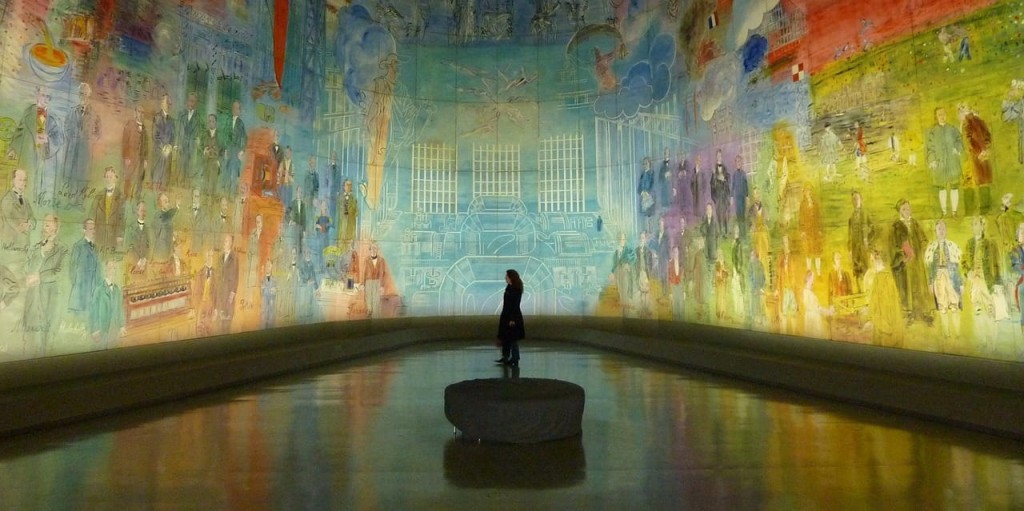
Art essay topic choice
Like every other essay, there are general tips that should be considered when coming up with an art essay writing topic.
- The type of art: this may include a painting, a sculpture or just a simple hand diagram. The type of art is important as it sets out what you are supposed to write about.
- What intrigues you about the art: this is the most important part of the essay. The whole art essay is based on what you want others to know about the piece of art.
- Personal interests: what you, as a writer, love is very important as it narrows down the topic. It is easier to write on topics that are well-known to you.
There are a number of art essay writing topics to choose from.
Below is a list of topics for an art essay
- Differences between Picasso’s concepts and Matisse’s
- The history of art in the Netherlands
- Differences between Bernini and Borromini
- The inspiration behind famous painting
- The Mona Lisa
- Leonardo Da Vinci
- Ancient Roman structures
- The sculptures of nude women
- Impressionism era of art in Netherlands
- The graphics of modern day art
- Insinuations behind ‘The Thinker’
- The Pieta of Michelangelo
- The contribution of Vincent Van Gogh and Piet Mondrian
- Flemish Baroque in the 17th century.
The above are some of the good topics for an art essay.
Structure of an art essay
The art essay topics determine the kind of structure to build on. However, most have a standard art essay structure.
Sample of art essay outline
Introduction.
The Mona Lisa is one of the most known paintings in the world. This is the painting of Lisa Gherardini, the wife of Francesco Del Giocondo, believed to have been painted in the 16th century. It is the work of Leonardo da Vinci and it was purchased by King Francis I. The Mona Lisa is currently under the ownership of the French government.
Thesis statement
The Mona Lisa has had a great impact towards the contribution of art in France:
(i) It is one of the most famous paintings in the world. The Mona Lisa is the painting that everyone wants to see. It is so precious that only a copy of it is actually showcased in the museum.
(ii) It has led to the growth of art. The Mona Lisa has inspired artists all over France. There has been a rise of many artists including Camille Pissarro, a painter, and Etienne-Jules Marey, a photographer.
It is clear that the Mona Lisa is the soft spot in France. The French take pride in it and have used it to improve their lives. Besides its contribution to art, it has also placed France among the leading countries that celebrate art. This has therefore created a culture of being drawn to art and it is reflected in their way of life.
The above is a sample of outline for an art essay.
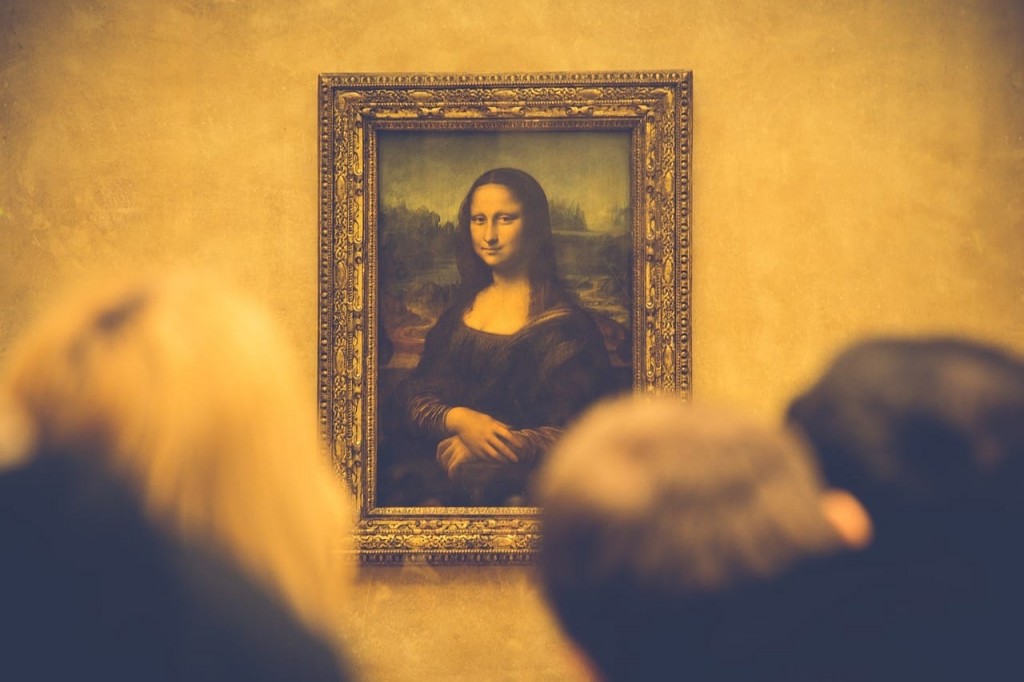
Arts essay tips on writing the introduction
An art essay introduction identifies the art and the artist. Art is diverse, as it could be sculptures, architecture, performing arts or paintings in it. This is where you state why you chose that topic. It also contains a history of the said art and brief details, like who the artist is, the year, the location, etc.
The introduction for an art essay states the thesis. It may be a general statement about the art or a specific aspect of it.
Tips on thesis writing
The thesis statement should be simple and easy to write about. Too complex statements tend to be confusing.
- Pick a statement that is closer to your understanding.
- Ensure it is as simple as possible.
- To avoid irrelevancy, one can have an art essay draft that they can build on.
Tips on the body (transitions, paragraphs, and length)
This is the main part of the essay where you derive analysis based on your point of view. Describe why the art is so appealing to you. Ensure that your defense covers an angle that has not already been covered for uniqueness. For example, one can focus only on the strokes of a portrait. However, ensure that what you describe is relevant to the thesis of your art essay topics.
The essay should not be too long. The sentence construction should also be well done. For this reason, it is advisable to have your points arranged into paragraphs. Ensure that each paragraph is independent and speaks volumes. This ensures that the art essay hooks the reader.
The transition from one paragraph to the next should also be smooth. Using cliché transitions makes the essay boring; therefore, you need to be creative.
Tips on conclusion writing
In an art essay conclusion, one needs to state their opinion. What you think the artists` feelings were and why they decided to paint it the way they did. At this point, you can state the events that contributed to the artist coming up with that art. The conclusion for an art essay requires a lot of research into the background of both the art and the artist(s). For this reason, the references and sources of the information should be cited.
Advice for writers
In art essay writing it is important to first do your research. Art is so diverse and this can be sometimes confusing. The topic to write on should be related to your interests, for example, as a musician, you would find it easier to write about performing arts and music. Besides this, do not plagiarize any work done. Cite and state all sources, making sure that you observe all rules of patent and copyrights.
For you to be a good writer, these art essay tips will be very helpful. The best writer is the one who admits to being in a need of help. The art essay writing guide can also be used to find more about art essay writing steps. Different sources could give different art essay outlines so you need to be careful.
Finalizing the essay
After writing the art essay, it is important to have a clean essay. This calls for proofreading and editing. Proofreading ensures that you do not have any grammatical errors, the art essay outlining is as required, your sentence construction is good and the language used is the required one. Some sites offer art essay writing guide for use when one gets stuck. Proofreading also ensures that the art essay structure is followed. After this is done, ensure that the format used is correct whether APA, MLA or Chicago.


- Customer Reviews
- Extended Essays
- IB Internal Assessment
- Theory of Knowledge
- Literature Review
- Dissertations
- Essay Writing
- Research Writing
- Assignment Help
- Capstone Projects
- College Application
- Online Class
Music Argumentative Essay Topics: 25+ Ideas for Inspiration
by Antony W
April 21, 2023

Music is no doubt the best go-to stress buster for all of us. No wonder if you look around you, you’ll see people listening to music from all kinds of music devices you can name.
From Mp3 players and smartphones to PA systems and car stereos, the world around you is no doubt almost fully musical in form.
With news lyrics, celebrity gossips, artists, and new musical hits appearing on YouTube, Sound Cloud, and Spotify every day, there’s no limit to the number of argumentative essay topics on music.
From Robert Matthew Van Winkle fast rap to Dax hip-hop tunes, finding the right essay topic to explore just got easier. In this post, we give you a list of 30+ argumentative topics from which you can choose an appealing title to give your essay a fresh, breathtaking spin.
Music Argumentative Essay Topics
The following is a list of 30+ music argumentative essay topics that you can consider if you have no idea where to start – or if you need a title to start working on right away:
- Is pop culture an evergreen vogue or a temporary fad?
- Can we term fusion music as actual music?
- White rappers are giving a bad name to the rap music genre
- Pop music is worthy enough for our ears than rap music
- Jazz music is dying out
- Can we use music as treatment for mental health disorder?
- Music influencers are a waste of time
- People should not allow the playing of music in the realm of politics and political campaign
- Digital music formats will completely wipe out physical copies from distribution
- It’s impossible to enjoy music without understanding the lyrics
- Metal music has a very bad influence on people’s behavior
- EMD is pure noise, not music
- One doesn’t need to have musical training to write lyrics and sing as natural talent is enough
- Should School students should study music instead of learning how to dance
- Is music an effective means of drawing in potential customers to a new product?
- Music has the power to increase an individual’s level of productivity
- Music isn’t as addictive as movies and television series
- Children can learn music faster than adults
- Music producers are not doing enough to promote musicians new to the industry
- Are parental warning labels on music videos really necessary?
- Music can’t affect a student’s ability to read and complete their homework
- Social media presence and celebrity stays hugely contributes to the rate of an artist’s success.
- Should companies incorporate music in their marketing campaigns?
- Existing laws cannot stop people from realistically copying music
- Music doesn’t help the world become a better place
- Do music award events influence the type of music that many people listen to?
- Music award shows create hostility among musicians more than they inspire creative art
- Music should be a mandatory subject in literary school
- Music producers are responsible for the moral degradation that stem from the production of explicit music
- Can the entertainment industry prevent
- Do certain genre of music, such as rap and hip-hop, generate violence?
- It’s unethical to copyright traditional music
- Can we borrow music from international artists without necessarily attributing their work?
- Should the social controversies about a musician influence our decision to listen to their music?
- Do musicians choose the genre of music depending on the instruments used?
- Movie and TV production industries pay musician more for continuous use of their work.
- Is music of the future generation will be more annoying than the current
- Music that’s used to present bad and harmful ideologies should be banned
- The advent of internet music has made physical music stores completely irrelevant
- Music can help a person to mediate and find a greater purpose in life
- Is listening to music more entertaining than watching movies or playing the 21st century video games?
- Music genre has a limited number of tune variation
- Is music without lyrics pure?
- Should YouTube ban the publication of X-rated music completely?
- Classical music is better than other music genres.
- Companies such as Spotify and Deezer should stop charging people a monthly subscription to listen to music.
- Offline music apps are a waste of time in the current internet-powered world.
- Are piano music sheets relevant in the production of modern music?
- Politicians use music as propaganda in political races.
- Music has a positive impact on modern society.
- Traditional old school music is better than modern music.
- The production of explicit music videos should banned.
- Is there a connection between different music genres?
- Classical music doesn’t play any significant role in the production of music today
- International music is better than local music
- Does the ability to play piano automatically makes one an expert in writing music sheets?
- There’s no connection between social class and music genre
- Does music have a negative influence on society?
- X-rated music has a negative effect on a listeners brain
- Music is way better than other types of media
- Music has more influence on culture than poetry does
- Is writing music an art?
- Writing music doesn’t reflect the way an artist thinks in their daily life
- Do women play an important role in the production of music?
- Women play a great role in the production of music
- Modern pop music is badly written compared to the pop music of the 60s.
- Celebrities who release music but have no musical talents should not be promoted to be as famous as professional musicians.
- Violent lyrics in music plays a role in building a violent society
- Are parental warning labels on music still relevant today?
- Music band that have been inactive for years should not come back
Get Instant Writing Help
Your music argumentative essay doesn’t have to be difficult to write. An argumentative essay writer is available for hire to help you get the work completed in the shortest time possible.
Whether you don’t know which topic to choose or you’re already running late, Help for Assessment can help you ease the complexity of the writing process, so you can submit the essay before due date.
Our focus is purely on custom writing, which means you don’t have to worry about intellectual theft whatsoever. You can order an essay here if you need immediate help. And one of our writers will start working on your order right away.
Related Reading
- Technology Argumentative Essay Topics
- Argumentative Essay Topics on Racism
- Argumentative Essay Topics on Social Media
About the author
Antony W is a professional writer and coach at Help for Assessment. He spends countless hours every day researching and writing great content filled with expert advice on how to write engaging essays, research papers, and assignments.

The Role of Art and Music Therapies in Mental Health and Beyond

Prescribing art therapy , yoga, and music lessons is truly a breakthrough for mental health treatment . I want to be completely clear here, this is a breakthrough, but not a breakthrough therapy per se. It is a huge step forward, on the level of readjusting our mental health system, it is really a systems course correction at the root of it. Art therapy, music, etc., all are tested modalities for improving mental health conditions; almost all of them. For chronic, highly disordered and severely dysfunctional patients, this is not a miracle cure. These are, at best, supplementary, tandem, and co-functioning treatment methods to mitigate the severity and intensity of symptoms.
I am not knocking or trying to minimise the importance of this breakthrough. These are not only important modalities in and of themselves, but also support the creativity , independence, and freedom of patients to not only choose their own method of care but also nourish their capacity to carry on treatment more autonomously without being under direct supervision .
Even more importantly, the system is broken, in total if not complete disarray, and needs to be revised urgently if we are to advance treatment at the speed it requires to meet the mental health crisis where it’s at. These new prescribed modalities will not only serve to add ‘person-centredness’ to the paradigm but also new flexibility within the limits of the system.
Even highly disordered patients are extremely creative during their darkest hour. Art therapy, music, and all of these modalities which draw upon creativity and promote purposeful free-flowing ideas are as self-soothing as they are productive in reducing the negative impact of active symptoms.
I can tell you that I have benefited from a music or art group on an inpatient unit in the hospital many times. Some of my fondest memories from experiencing first-episode psychosis in the hospital were singing and dancing to Stevie Nicks , at my request, when I could barely speak from word salad symptoms and was just a few moments away from being transferred to a higher level of inpatient care for unresolved psychosis. But I danced and laughed like the floor was on fire.
Art, music, yoga, all of these modalities are terribly inaccessible to most patients living off state benefits, who are consigned to a life shut-in and isolated in their homes. Aside from ‘getting out more’, these patients simply don’t have the resources to pay for and maintain a connection to art therapists and other more non-traditional treatment in the community. Unless you are connected to a special service or have the best insurance, these modalities simply aren’t an option for most service users and people with a severe mental health condition.
I truly applaud this shift in the systems paradigm that for so long was all about medication and traditional psychotherapy. We really need more of this in countries supposedly promoting better mental health treatment.
I also want to suggest that therapists who practice traditional talk therapy , straight CBT (cognitive behavioural therapy) can continue to add new self-soothing and proven techniques to their toolkit. I am always encouraging my student therapists to do artwork, let their children dance in therapy. Yes, you read this right, just dance, when the time is right and fits the course of treatment.
We need to get out of this traditional black and white thinking of what therapy is and is not . Therapy is what people need in the moment, to feel and behave in a manner that better suits their goals, chosen lifestyle, and needs. So with this said, why not let a child who is struggling to adjust to a new foster parent, dance in session when he can’t play at home. Sure, not for every session and for the duration of every patient contact, but sometimes, when it will benefit the patient, you just have to do it.
Yes, this is truly a breakthrough in thinking among us practitioners and the higher-ups in our discipline who say what’s what in mental health treatment. It signals that we need to be dynamic, and shift our thinking as practitioners, peers, and anyone charged with providing therapeutic intervention . It is high time we see more of it, from government-sponsored care and any system which is charged with the care of people with a psychiatric disability, or who needs therapeutic intervention to find relief from whatever problem in their life is causing them distress.
Max E. Guttman, LCSW is a psychotherapist and owner of Recovery Now, a mental health private practice in New York City.
VIEW AUTHOR’S PROFILE
Related Articles
The importance of group fitness for social connection, royal college of psychiatrists says 10-year waits for bipolar diagnosis “unacceptable”, pet grooming – keeping your pet physically and psychologically healthy, mental health is a journey of personal growth and resilience, the psychological impact of pursuing a career in saving lives, how speech-to-text technology elevates mental health practices, restore investment in mental health support for nhs and social care staff, say leading organisations, understanding the mental toll of chronic illness on patients and families, sleep for health – conquer insomnia and wake up refreshed with 11 effective hacks, want to live a happier life mental health expert shares 8 simple strategies to try, can wellness breaks be affordable, 5 key signs you’re experiencing medication-induced stress, supporting children’s mental health during the school holidays, semiotics boosts social work impact in diverse settings, new study finds, study shows optimism reduces covid fear – experts urge positive mental health approaches, new study reveals success of cbt and online therapies in tackling student mental health issues, students turn to asmr videos for stress relief and improved focus, reveals new study, 7 ways mental health affects your overall physical health and well-being, let’s break the silence and enter a new era in mental health advocacy, celebrating neurodiversity week with divergence supplements: the first science-backed neurowellness supplements for the modern mind, the iba professional well-being commission launches international guidelines for well-being in legal education, national charity ceo walks in the wake of st cuthbert on world bipolar day, mmi to focus on moral injury, obsessive compulsive disorder, and posttraumatic stress disorder at bsava congress 2024, ketamine offers new hope in treating severe depression and suicidal thoughts, study finds.

Psychreg is a digital media company and not a clinical company. Our content does not constitute a medical or psychological consultation. See a certified medical or mental health professional for diagnosis.
- Privacy Policy
© Copyright 2014–2034 Psychreg Ltd
- PSYCHREG JOURNAL
- MEET OUR WRITERS
- MEET THE TEAM
9 things to know about the great Disney-Nelson Peltz proxy fight
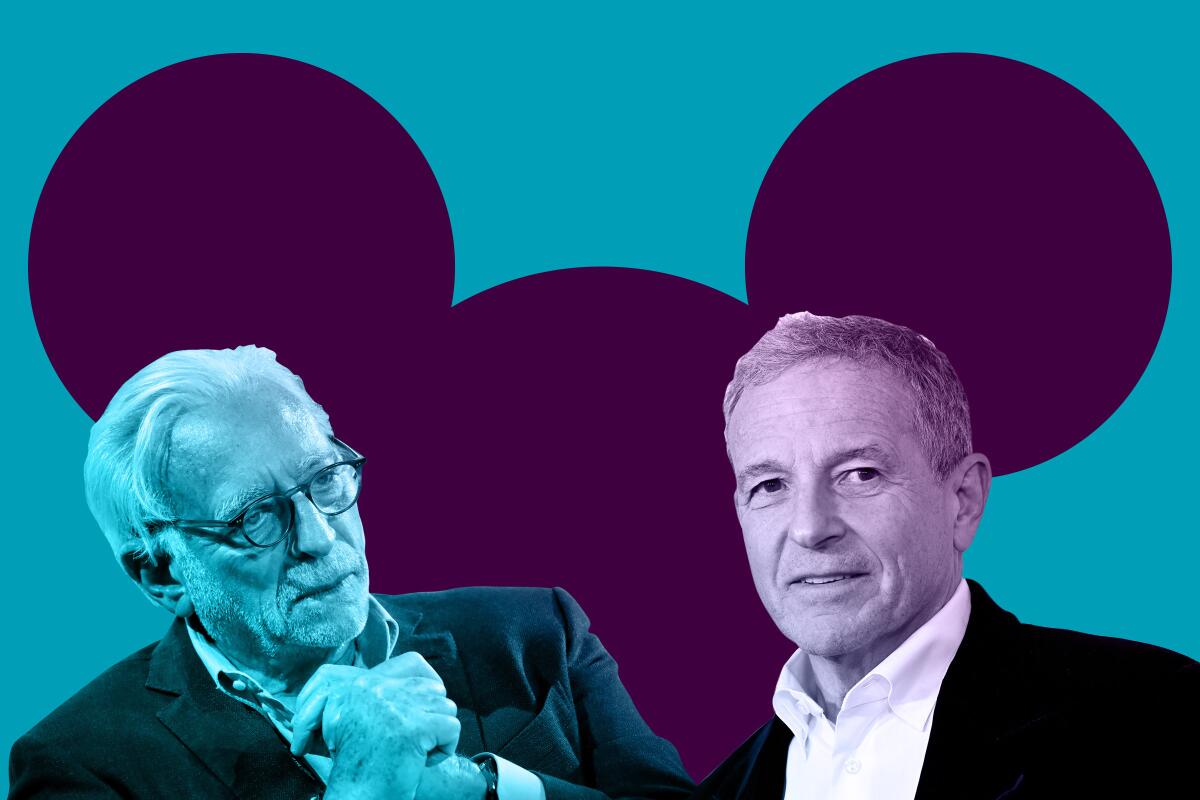
- Show more sharing options
- Copy Link URL Copied!
Walt Disney Co.’s dramatic battle with billionaire shareholder Nelson Peltz and his firm, Trian Fund Management, comes to a head this week.
It’s the most significant challenge to Bob Iger’s power during his time at the Burbank entertainment giant, and the biggest show of Disney shareholder discontent since the end of the Michael Eisner era . The closely watched dispute has created headaches for Disney’s leadership during much of Iger’s tenure after he returned as the Mouse House’s chief executive in November 2022.
You’re reading the Wide Shot
Ryan Faughnder delivers the latest news, analysis and insights on everything from streaming wars to production — and what it all means for the future.
You may occasionally receive promotional content from the Los Angeles Times.
What’s happening?
On Wednesday, Disney will tally and announce the results of the shareholder vote that will determine the makeup of its board of directors. The company has strenuously encouraged shareholders to approve its full 12-person slate of nominees. Peltz’s Trian has put forth two candidates: Peltz himself and Jay Rasulo, a former Disney chief financial officer. Another activist investor, Blackwells Capital, has named three contenders.
What time is this happening?
The webcast of Disney’s shareholder meeting begins at 10 a.m. (Pacific time) Wednesday.
What’s at stake?
In literal terms, at least two board seats. Trian has encouraged Disney investors to vote for Peltz and Rasulo and to withhold their support of a pair of current Disney directors: Maria Elena Lagomasino and Michael B.G. Froman.
Iger’s position as CEO and board member is not being openly challenged. Nonetheless, as my colleague Meg James writes , the election has effectively become a referendum on Iger’s leadership and his strategy for turning around the company after a period of well-documented struggles.
Who are Disney’s shareholders?
A mix of institutional investors (including funds of the mutual, index, pension and hedge variety), plus Disney executives and, importantly, a significant number of individual (or “retail”) stockholders, who, because of Disney’s place in pop culture, have more sway than at many other corporate giants. Some of Disney’s shareholders are children who’ve been gifted stock by relatives.
According to FactSet, Disney’s shareholder breakdown is 67% institutional and 33% “unknown” (including individuals). The heavyweights include Vanguard and Morgan Stanley.
Who’s on Team Iger?
Multiple bigwigs have voiced support for Iger, including but not limited to “Star Wars” creator George Lucas; Emerson Collective founder and president Laurene Powell Jobs, who is the widow of Pixar and Apple co-founder Steve Jobs; JPMorgan Chase CEO Jamie Dimon; Eisner, the former Disney CEO; shareholder advisory firm Glass Lewis; Mutual fund T. Rowe Price and asset manager BlackRock ; and the grandchildren of Walt and Roy Disney, including Abigail Disney, a longtime critic of Disney’s executive compensation practices.
What about Team Peltz?
Other major names have backed Trian, such as: Ike Perlmutter, former CEO of Marvel Entertainment; ISS , a key institutional shareholder advisory firm; Egan-Jones, a ratings agency ; CalPERS, which holds around 6.6 million Disney shares.
What are Peltz’s main arguments?
Trian, in its communications, including a more than 130-page white paper , has leveled numerous and varied criticisms at Disney’s board, which Peltz broadly views as having been too complacent amid major shifts in the entertainment industry. As such, Peltz & Co. point out, Disney’s stock has underperformed the S&P 500 during a five-year period. The group tasked with overseeing the company, Peltz and his supporters say, needs fresh eyes.
Trian’s big contentions include that Disney erred in paying $71 billion for 21st Century Fox, doubling down on the declining linear TV networks business; entered the streaming sector too late, lost too much money and needs a plan to achieve “Netflix-like” profit margins; lost its way with film, judging by the performance of recent Marvel and Pixar movies; bungled succession planning, as seen with Bob Chapek’s short tenure as Iger’s replacement CEO; and lacks a coherent strategy for the future of ESPN .
What is Disney’s case?
Disney says many of Trian’s claims are wildly misleading and that the majority of Peltz’s suggestions are things that the company is either already doing or had previously considered. The company has released blistering letters and videos to investors, including a political campaign-style ad, arguing that Peltz’s campaign is tainted by Perlmutter’s long-running feud with Iger and that both the former Marvel boss and Rasulo are disgruntled former employees.
Moreover, Iger has spent the bulk of his second term getting Disney back on track, and shareholders have rewarded his efforts . The stock is up more than 30% so far this year. Peltz has taken credit for some of the stock surge, an assertion that Disney vigorously disputes. The shares spiked after a strong February earnings report that coincided with several splashy announcements, including Taylor Swift’s Eras Tour movie coming to Disney+ and a $1.5 billion investment in “Fortnite” maker Epic Games.
How will this end?
It’s unclear. Until recently, Disney’s stock gains had made it seem as if the wind had gone out of Peltz’s sails. But that was before ISS, which carries considerable weight among big investment funds, put its stamp of approval on Peltz (though not Rasulo), citing the company’s flawed track record with succession planning. We’ll find out soon enough on Wednesday.
Stuff we wrote
Is Shohei Ohtani too big to fail? The Dodgers star’s name and image has been a powerful marketing force. Will the controversy around his ex-interpreter affect his brand potential?
AI companies are courting Hollywood. Do they come in peace? Hollywood talent agencies and producers have met with artificial intelligence companies, including ChatGPT maker OpenAI, to learn about how their technologies could be used in entertainment.
The Conga Room welcomed Latin luminaries for 25 years. Why club founders say it’s time to let it rest. Fans flocked to see Latin icons, from Celia Cruz to Bad Bunny. The club’s founders reflect on the end of its run.
The docket:
- Georgia lawmakers kill effort to cap film tax credits as production hub continues to rival California
- MediaLink founder Michael Kassan sues UTA attorney for defamation amid heated legal battle
- Disney and DeSantis-appointed Florida oversight board settle lawsuit
Number of the week

It’s about a week before CinemaCon kicks off in Las Vegas, where the movie theater operators and studios will gather to slap each other on the back and celebrate the wonders of the big screen.
There’s been at least some reason for cheer lately, despite predictions that 2024 will be a rough year at the box office thanks to the lack of big theatrical releases after six months of labor strikes overhauled studios’ calendars.
Easter weekend’s big release, “ Godzilla x Kong: The New Empire ,” exceeded expectations with estimated domestic ticket sales of $80 million, and delivered the second best opening of the year behind “Dune: Part Two.” Including international business, the kaiju smash-em-up scored $194 million, with premium formats including Imax and Dolby Cinema accounting for 48% of revenue.
The Adam Wingard-directed tentpole carries an estimated $135-million production budget, which doesn’t include marketing costs.
With the “Dune” sequel ($252 million, domestically) and DreamWorks Animation’s “Kung Fu Panda 4” ($151 million) also generating business, the first quarter of the year wasn’t quite as bad as analysts had feared it would be. Movies collected $1.6 billion in the U.S. and Canada through March, down 6% from the same period of time last year. Roth MKM analyst Eric Handler had predicted a steeper decline of 9%.
Even so, all is not well in the film exhibition industry.
AMC Theatres’ stock dropped more than 14% on Thursday after the Leawood, Kan.-based company disclosed that it might sell up to $250 million in stock to bolster its finances after a period of weak box office, some of which can be blamed on Hollywood’s twin strikes. It’s the latest move by heavily-indebted AMC to steady itself following its meme-stock rollercoaster ride.
The company’s shares are down more than 90% from the same time last year.
Following the pandemic closures, some theaters shut down for good, while others teetered. The effects are still rippling out.
Deadline has reported that popular Austin-based chain Alamo Drafthouse was up for sale , less than three years after emerging from Chapter 11 bankruptcy. It wasn’t clear if there were any bids or what the asking price might be. Regal’s U.K.-based owner Cineworld, the world’s second-largest chain after AMC, exited its own bankruptcy last year .
Despite the optimism sparked by recent hits, the theatrical film industry remains challenged. The slate for the next three months is thin compared to last year, though “The Fall Guy,” a new “Planet of the Apes” flick and “Furiosa” hold some promise. The issue is not just a shortage of films in the marketplace but also long-term shifts in audience behavior and preferences.
The latest monster mashup and the “Dune” follow-up show that audiences will still shell out for well-made, correctly marketed event films, and even pay a premium for the best experience. The problem for theaters isn’t as much about the demand for movies as many had feared it was in the immediate wake of the pandemic. Having healthy theater companies, though, remains a separate question.
Shares of No. 3 chain Cinemark, which has benefited from a much stronger balance sheet than its closest rivals, are up more than 20% from a year ago.
Best of the web
— Evan Gershkovich’s stolen year in a Russian jail . (Wall Street Journal)
— Streaming has rediscovered the TV procedural . (Vulture)
— U.S. recorded music revenue rose 8% in 2023 as streaming growth remained steady. (Billboard)
— Will country music welcome Beyoncé? That’s the wrong question. (New York Times)
— How the Atlantic, backed by Laurene Powell Jobs, went from broke to profitable in three years. (WSJ)
Finally ...
Hey nerds, check out Mikael Wood’s oral history of Weezer’s Blue Album . Whoa-whoa-ah-whoaaaaaa.
The Wide Shot is going to Sundance!
We’re sending daily dispatches from Park City throughout the festival’s first weekend. Sign up here for all things Sundance, plus a regular diet of news, analysis and insights on the business of Hollywood, from streaming wars to production.

Ryan Faughnder is a senior editor with the Los Angeles Times’ Company Town team, which covers the business of entertainment. He also hosts the entertainment industry newsletter The Wide Shot. A San Diego native, he earned a master’s degree in journalism from USC and a bachelor’s in English from UC Santa Barbara. Before joining The Times in 2013, he wrote for the Los Angeles Business Journal and Bloomberg News.
More From the Los Angeles Times

Company Town
Hollywood celebs are scared of deepfakes. This talent agency will use AI to fight them
April 2, 2024

Former MGM film executive Jonathan Glickman named CEO of Miramax

WME owner Endeavor to go private again after three-year run as a public company

Disney’s biggest shareholder fight in 20 years will shape the company’s future
- Share full article
Advertisement
Supported by
Steve Harley, ‘Make Me Smile’ Singer, Dies at 73
He was the frontman of the rock band Cockney Rebel, which landed several hits on the British charts in the 1970s.

By Orlando Mayorquín
Steve Harley, the 1970s British rock star who topped Britain’s music charts with the single “Make Me Smile,” died on Sunday at his home in Suffolk, England. He was 73.
H is family announced the death on Facebook. No cause was given, but Mr. Harley had announced last month that he would step away from the stage to undergo treatment for cancer and had previously canceled several concerts scheduled for this year.
Mr. Harley was the frontman of the band Cockney Rebel, which he formed in the early 1970s.
His biggest hit was the 1975 single “Make Me Smile,” in which Mr. Harley’s even-keeled vocals and melancholic lyrics cruise over an instrumental backing that bears the optimistic sound distinct to bands of the era. The song hit the top of the British charts in February of that year .
Cockney Rebel’s other British hits included the 1974 single “Judy Teen,” which peaked at No. 5 on the charts that year , and a funky cover of the Beatles’ “Here Comes the Sun” in 1976.
Other songs found success outside Britain.
“Sebastian,” a single featured on the band’s debut album, “The Human Menagerie,” released in 1973, became a No. 1 hit in Belgium and the Netherlands, according to Mr. Harley’s website.
In 1986, Mr. Harley and the singer Sarah Brightman made the first recording of “Phantom of the Opera,” the title song from the musical of the same name by Andrew Lloyd Webber.
Steve Harley was born on Feb. 27, 1951, in London and was, according to his online biography, the second of five children. His mother, who was a jazz singer in the 1940s, offered Mr. Harley one of his earliest introductions to music.
“She sang around the house when we were kids,” he said in a 2015 interview for the Tim Quinn YouTube channel, comparing his mother’s voice to that of Anne Shelton, a British vocalist who was popular during World War II.
When he was a child, his mother would sing along to Buddy Holly and other 1950s pop singers who would play on the radio, he said in the interview.
Complete information on survivors was not immediately available.
An illness and surgeries kept Mr. Harley rotating in and out of the hospital as a child. At age 12, while recovering from surgery, he found an affinity for the works of D.H. Lawrence, Ernest Hemingway and other authors and took a liking to Bob Dylan’s music, according to his online biography.
These artists, his website said, “moved a young Mr. Harley to realize that his life would likely be “preoccupied with words and music.”
He indeed became preoccupied with words in the late 1960s and early ’70s as he pursued a career in journalism, working for several daily newspapers in Britain.
Around the same time, his life as a singer was born in London nightclubs, where he would perform free, and where he met his eventual Cockney Rebel bandmates, with whom he struck the band’s first record deal in 1972.
A prolific performer, Mr. Harley continued singing days into his final years. He took the stage as recently as 2023.
An earlier version of this obituary misstated the year Mr. Harley gave an interview for the Tim Quinn YouTube channel. It was 2015 — not 2022, when the interview was posted online.
How we handle corrections
Orlando Mayorquín is a breaking news reporter, based in New York, and a member of the 2023-24 Times Fellowship class , a program for journalists early in their careers. More about Orlando Mayorquín
- Environment
- Real Estate
- Beer & Wine
- Cocktails & Spirits
- Openings & Closings
- Restaurant Guide
- Restaurant Reviews
- Top 100 Bars
- Top 100 Restaurants
- Concert Calendar
- Local Music
- Music Festivals
- New Times Pizza Week
- New Times Out to Brunch
- New Times Tacolandia
- Arts & Entertainment
- Eat & Drink
- Shopping & Services
- Sports & Recreation
- Readers' Choice
- Best of Miami Party
- Classifieds
- Advertise with Us
- Flipbook Archive
- Newsletters
- Promotions & Free Stuff
- Where To Find Miami New Times In Print
- Sign Up/Sign In
World Red Eye: Anitta, Camila Cabello, Offset, and Others

Anitta Celebrates Her Birthday at La Otra Miami
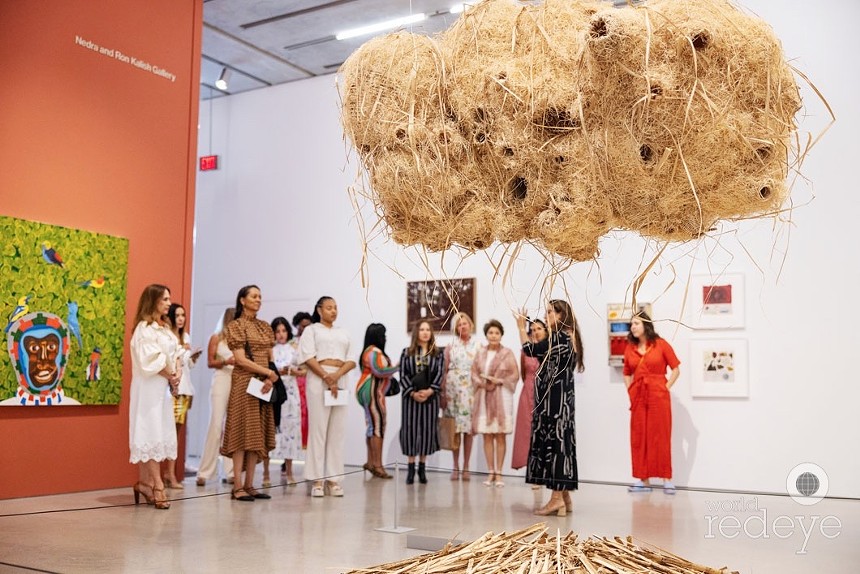
PAMM International Women's Committee Spring Tea
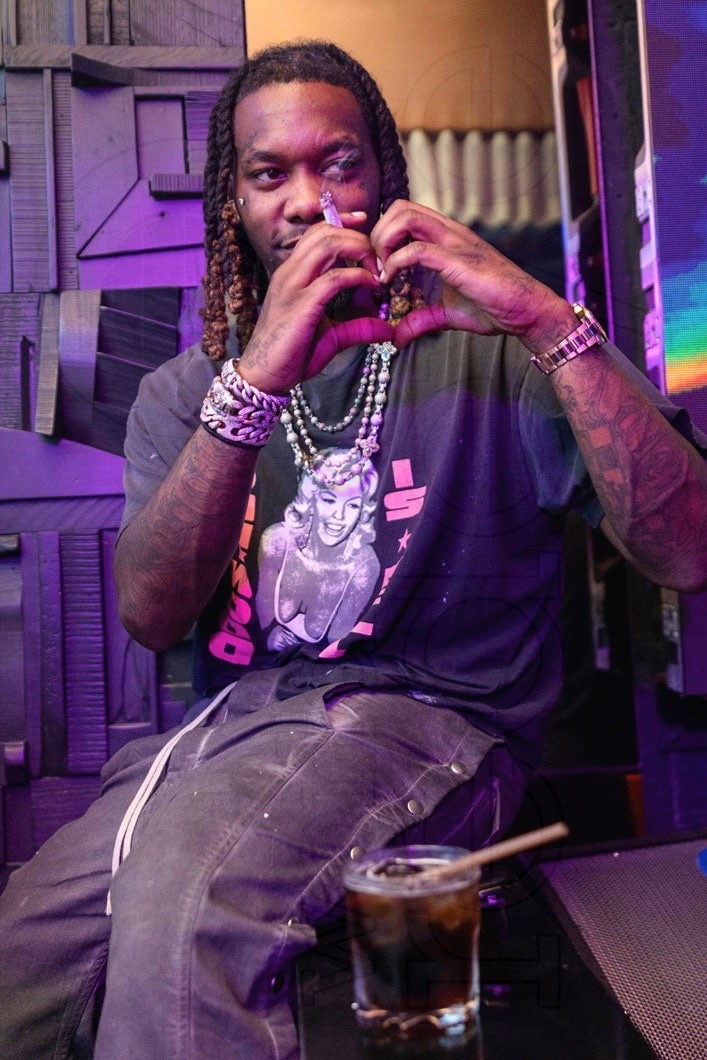
Offset at Gala Miami
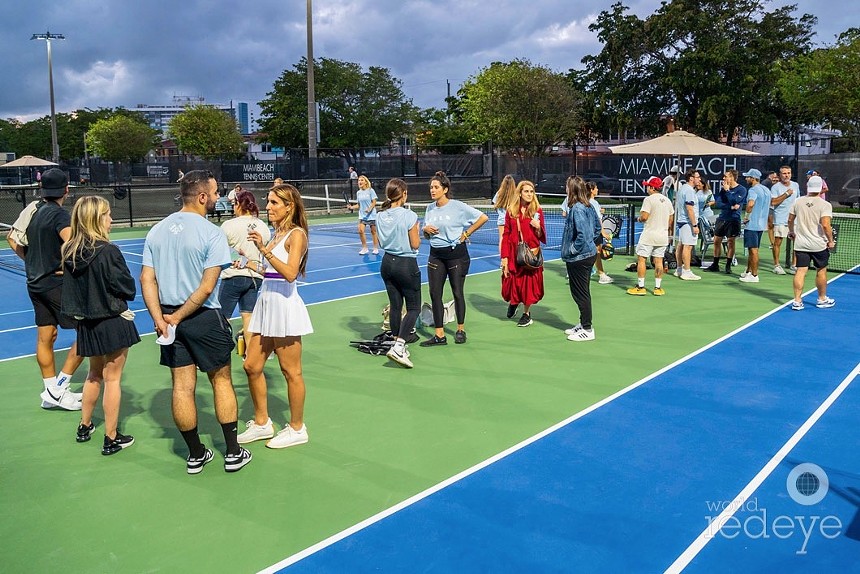
Pickleball Spring Slam with Ella at Miami Beach Tennis Center

Maestro Dobel Tequila, the Official Tequila of the Miami Open

SC Johnson CEO Fisk Johnson Tests for Microplastics and Leads Plastic Pollution Clean-Up Mission in Miami with 4Ocean

Groot Hospitality x Ultra VIP Deck 2024
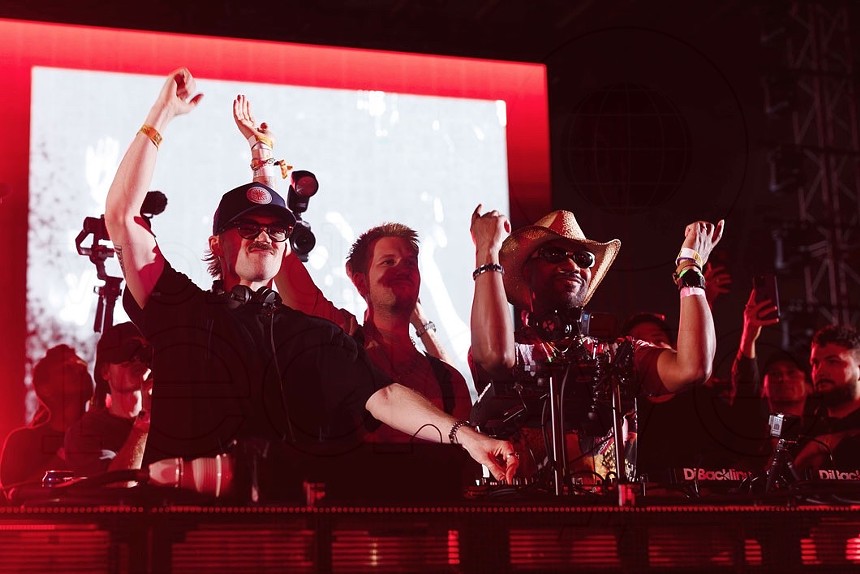
Dom Dolla, Green Velvet, and Mau P at Factory Town
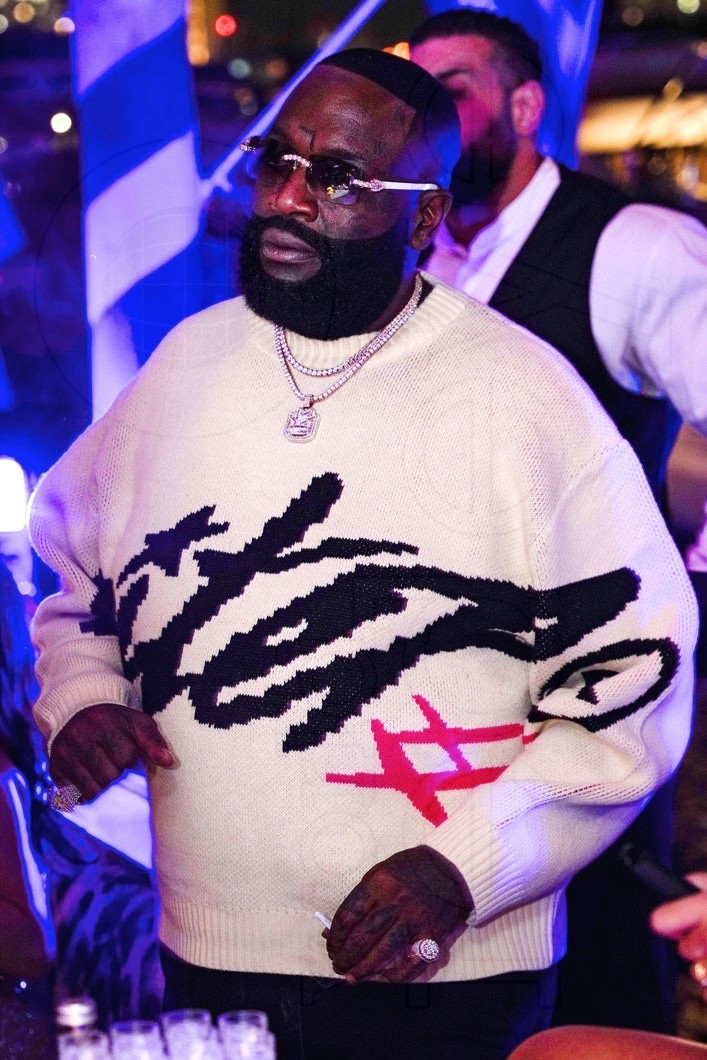
Rick Ross at Kiki on the River Sundays

Our House: Meduza x James Hype at Hyde Beach

ChaseWest Presents Chaste at Jolene Sound Room Miami
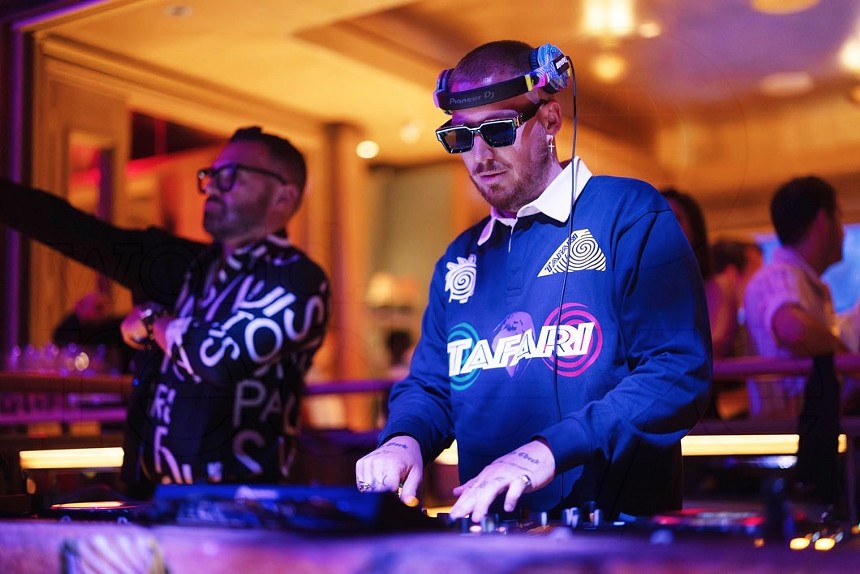
Hugel at Sexy Fish

John Summit, David Guetta, Steve Aoki, and Hardwell at LIV

Omar Courtz at Mayami

Martin Garrix at Strawberry Moon

Loco Dice at Floyd Miami
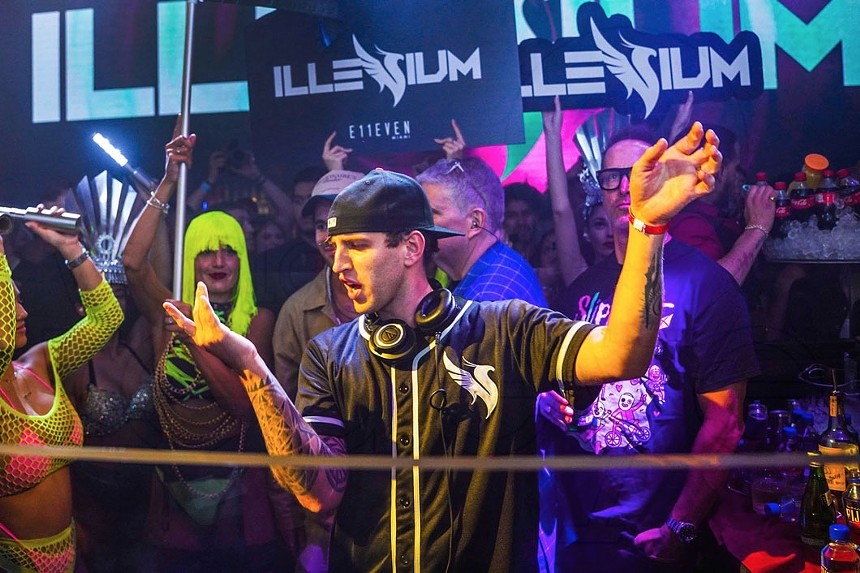
Illenium and Nicky Romero at E11even

Boho Saturdays

Newsletter Sign Up
Enter your name, zip code, and email, sign up for our newsletters.

Drag Queens
Rupaul's drag race season 16 episode 13: vegas makeovers.
By Trae DeLellis
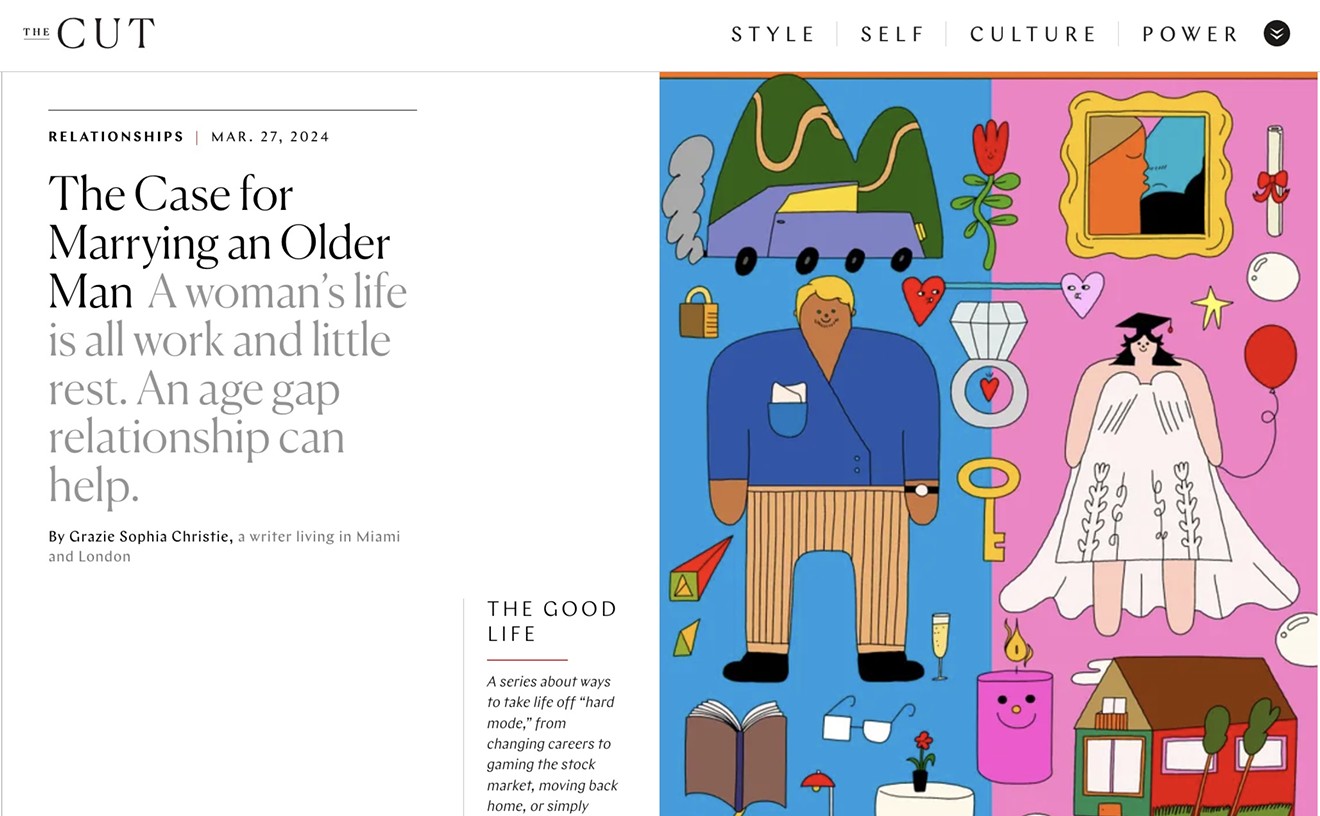
Social Media
Internet drags miami woman who wrote "the case for marrying an older man" essay.
By Naomi Feinstein
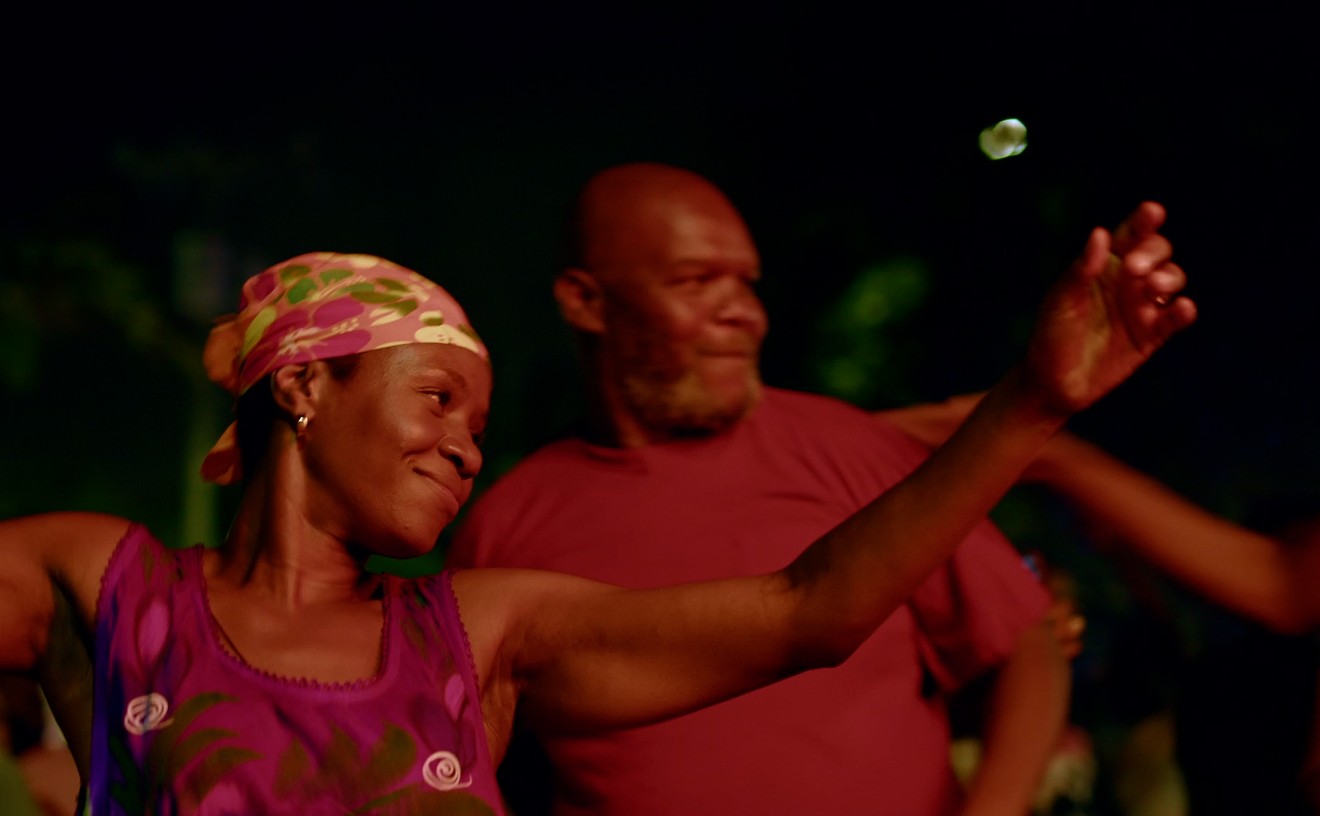
Miami Film Festival
Monica sorelle shines a light on gentrification in her film mountains.
By Carolina del Busto

- Things To Do
The 17 Best Things to Do in Miami This Week
By Ashley-Anna Aboreden, Jose D. Duran and Sophia Medina
- View This Week's Print Issue
- Food & Drink
- Arts & Culture
- New Times Events
- Advertise With Us
- Privacy Policy
- Terms of Use
- Voice Media Group
- Dallas Observer
- Denver Westword
- New Times Broward-Palm Beach
- Phoenix New Times
- V Audience Labs
- V Digital Services

IMAGES
VIDEO
COMMENTS
Impressionist musicians prefer to use dissonance instead of major and minor scales which are dramatically used in program music. Impressionist musicians' compositions are normally the short form. Examples of these short form compositions include prelude, nocturne and arabesque (Clancy 17).
Key Takeaway. When writing a college essay about music, it's important to avoid cliches and approach the topic in a deeply personal and meaningful way. Whether you focus on music as an academic interest or a significant extracurricular, you should show off your intellectual spark or personal strengths. Ask any admissions officer if they've ...
Music was an essential part of civic, religious, and courtly life in the Renaissance. The rich interchange of ideas in Europe, as well as political, economic, and religious events in the period 1400-1600 led to major changes in styles of composing, methods of disseminating music, new musical genres, and the development of musical instruments.
The critic, historian, music theorist, and virtuosic pianist Charles Rosen has spent the past half century examining this question, and his latest book, Freedom and the Arts: Essays on Music and Literature, a collection of 28 essays written mainly over the past 15 years, is his most expansive analysis to date of the challenges and pleasures of ...
Choose one and write a memorable essay about everyone's favorite art form. Music Argumentative Essay Topics. Music essays can be written about an infinite number of themes. You can even write about performance or media comparison. Here is a list of music argumentative essay topics. These edge-cutting topics will challenge your readers and get ...
Instrumental music or the singing of a hymn regularly accompanied everyday activities and formal acts of worship. Shepherds piped to their flocks, oarsmen and infantry kept time to music, and women made music at home. The art of singing to one's own stringed accompaniment was highly developed. Greek philosophers saw a relationship between ...
music, art concerned with combining vocal or instrumental sounds for beauty of form or emotional expression, usually according to cultural standards of rhythm, melody, and, in most Western music, harmony.Both the simple folk song and the complex electronic composition belong to the same activity, music. Both are humanly engineered; both are conceptual and auditory, and these factors have been ...
closely, analyze the music, and arrive at a view, an opinion, an interpretation of the music's meaning. So in many respects, strong essays about music are like the best essays about anything. They have a plausible and interesting main argument, a co-herent structure, convincing evidence, and an elegant style. The best papers about
Music in Tang-dynasty China (618-907) underwent a radical change in the sixth and seventh centuries as a result of the mass migration of peoples from Central Asia, many of whom came to the interior of China as musicians and dancers at the imperial court or in popular venues. Patronage of music at court peaked during the reign of Emperor ...
Referring to key examples, identify and discuss the historical relationship between art and popular music, using key examples to support your argument. Some people would think that art and popular music have no combined points of reference, and that each is a completely separate unit, with each subject trying to achieve several different goals.
A. Sharpe argues that the views these questions enshrine underestimate the cognitive element in our response to music. Our beliefs about music and our knowledge of the culture in which it originated underlie the judgements we make. At their most general, these cognitive elements are ideological in nature and they play both a positive and a ...
When writing a music essay, its essential to employ effective writing techniques that engage your readers and paint a vivid picture. Consider using descriptive language that appeals to the senses, making the music come alive on the page. Describe the melodies, harmonies, and rhythms with colourful adjectives and metaphors, allowing your readers ...
In this chapter, they review empirical evidence for the psychological benefits of the humanities, including art, music, and literature, and find that across a wide variety of samples, exposure and engagement are consistently linked to greater well-being. In particular, they suggest that the humanities may increase well-being directly by ...
Essay On Art Of Music. 724 Words3 Pages. I think I could not live without music. Music is an art of sound in time that expresses ideas and. emotions in significant forms through the elements of rhythm, melody, harmony, and color.
For those who already know Levinson's work, especially his significant contributions to philosophy of music, the volume's appeal is twofold. First, it contains several essays commissioned for publications that are likely to pass under the radar of philosophers (e.g., "Values of Music" appeared in the Handbook of the Economics of Art and Culture ...
What is the purpose of an art essay? Generally, an art essay is an essay that talks about art in sculpture, paintings, architecture, music and portraits. These kinds of essays are used for: Painting visual pictures: an art essay is an essay that showcases visual arts and creative ideas that people have come up with.
With news lyrics, celebrity gossips, artists, and new musical hits appearing on YouTube, Sound Cloud, and Spotify every day, there's no limit to the number of argumentative essay topics on music. From Robert Matthew Van Winkle fast rap to Dax hip-hop tunes, finding the right essay topic to explore just got easier.
The aim of the paper is to examine the role of art music in primary and secondary school and to point to the advantages that cognitive-emotional listening as a modern didactical approach offers ...
878 Reading Time: 3 minutes. Prescribing art therapy, yoga, and music lessons is truly a breakthrough for mental health treatment.I want to be completely clear here, this is a breakthrough, but not a breakthrough therapy per se. It is a huge step forward, on the level of readjusting our mental health system, it is really a systems course correction at the root of it.
Essay on Arts and Music. School is a place for student's overall development. They become successful by learning various things in school, like, Academics, sports and extra curricular activities. Interestingly, inclusion of extra curricular activities like music, arts and drama in student's timetable has caused a lot of debate.
Art and Music. "In any medium, entertainment is that which we can receive and enjoy passively, without effort, without our putting anything into the experience. Art is that which requires some initial effort from the receiver, after which the experience received may indeed be entertaining, but also transcending as well.
For example, being calm, becoming relaxed and other forms too.Just Imagine, when we go to a massage parlor, we hear smooth relaxing music which helps us to go in to trance and enjoy the massage. So this means we put some Input towards that music and It helps us to get relaxed. Thank you Art and Music By Redhead without effort, without our ...
The webcast of Disney's shareholder meeting begins at 10 a.m. (Pacific time) Wednesday. What's at stake? In literal terms, at least two board seats.
Steve Harley, the 1970s British rock star who topped Britain's music charts with the single "Make Me Smile," died on Sunday at his home in Suffolk, England. He was 73. H is family announced ...
Partygoers danced and vibed as they ordered endless bottle service to celebrate Miami Music Week, with special appearances from David Guetta, Steve Aoki, Hardwell, Laidback Luke, and Alix Earle.